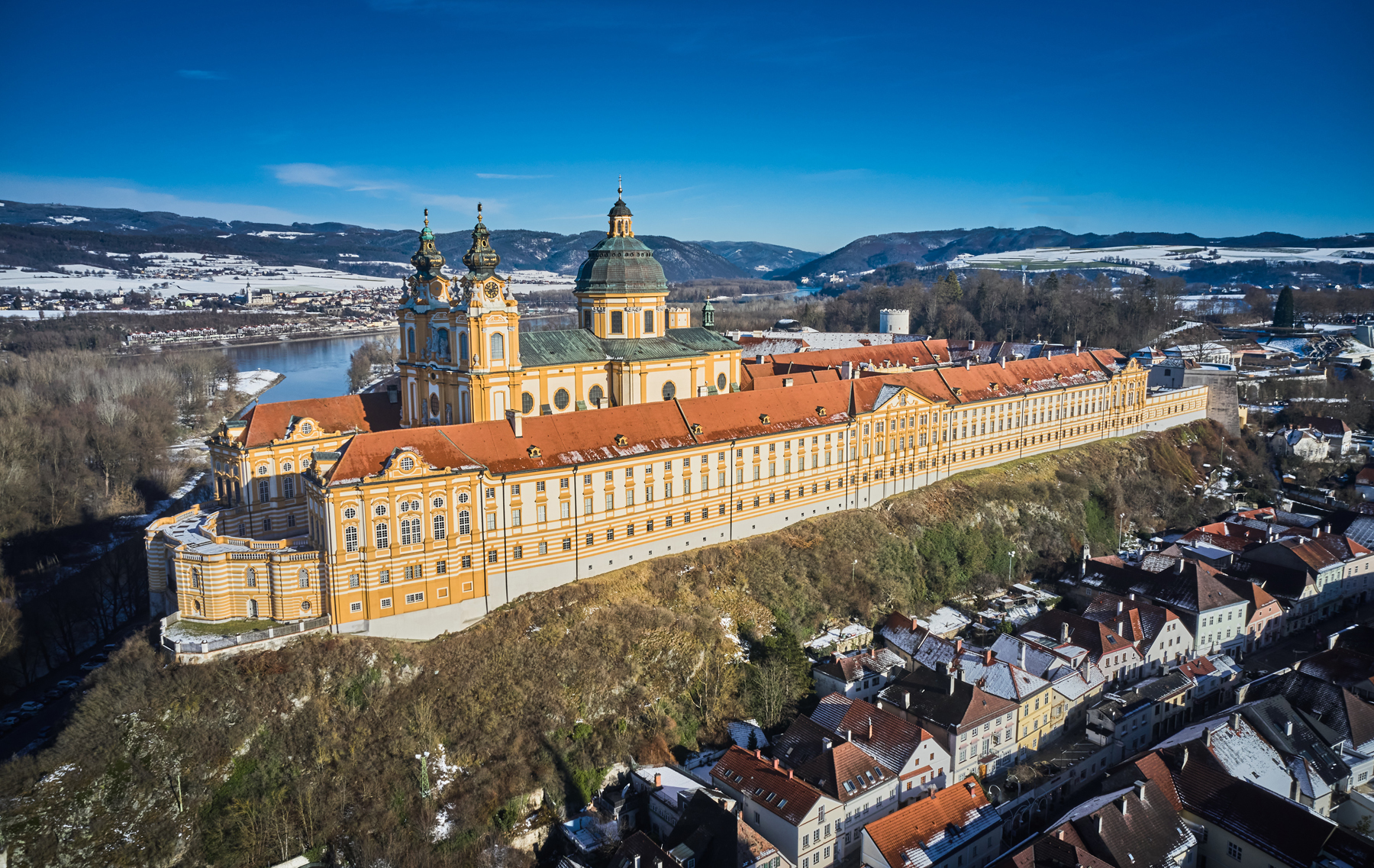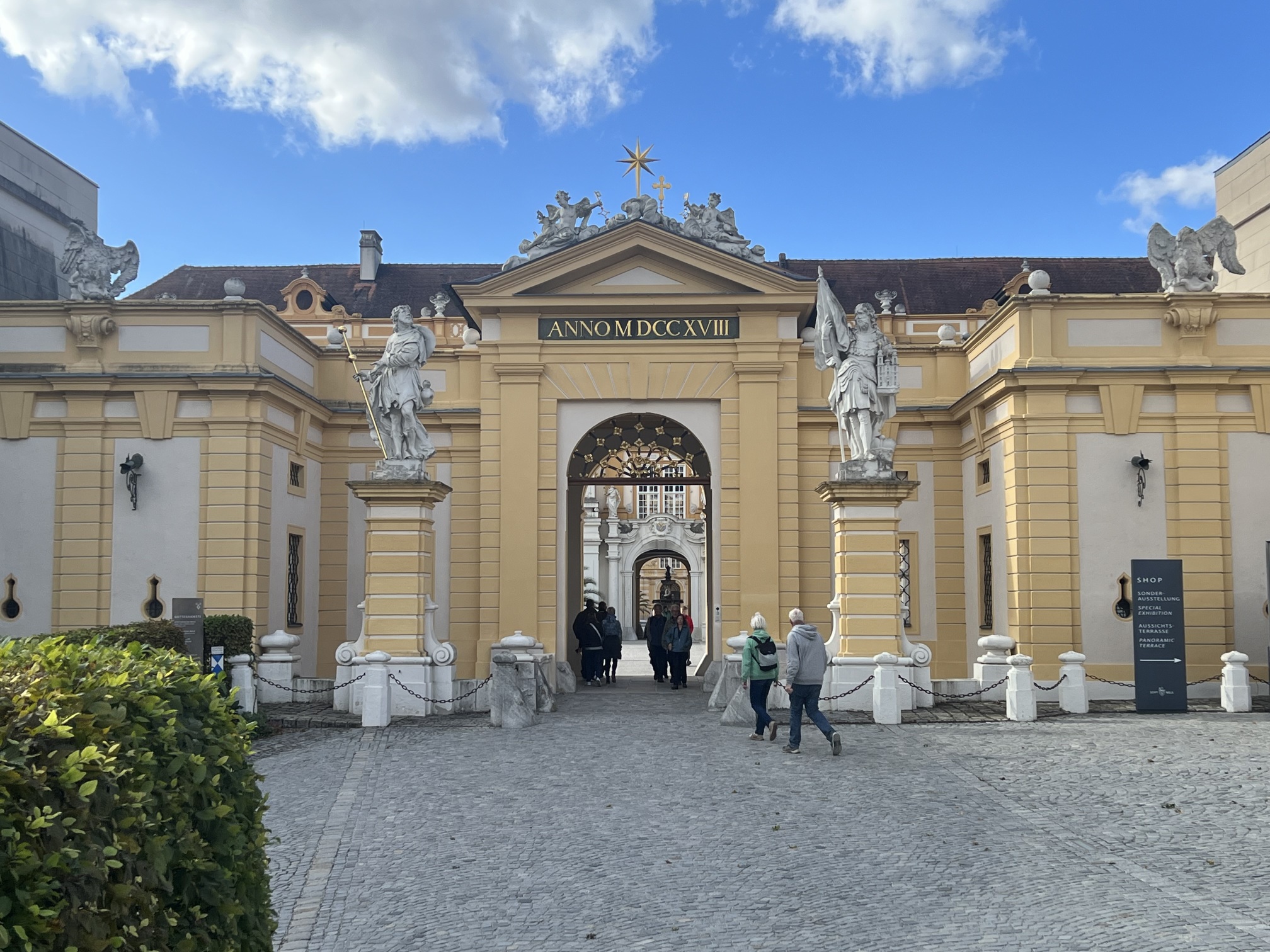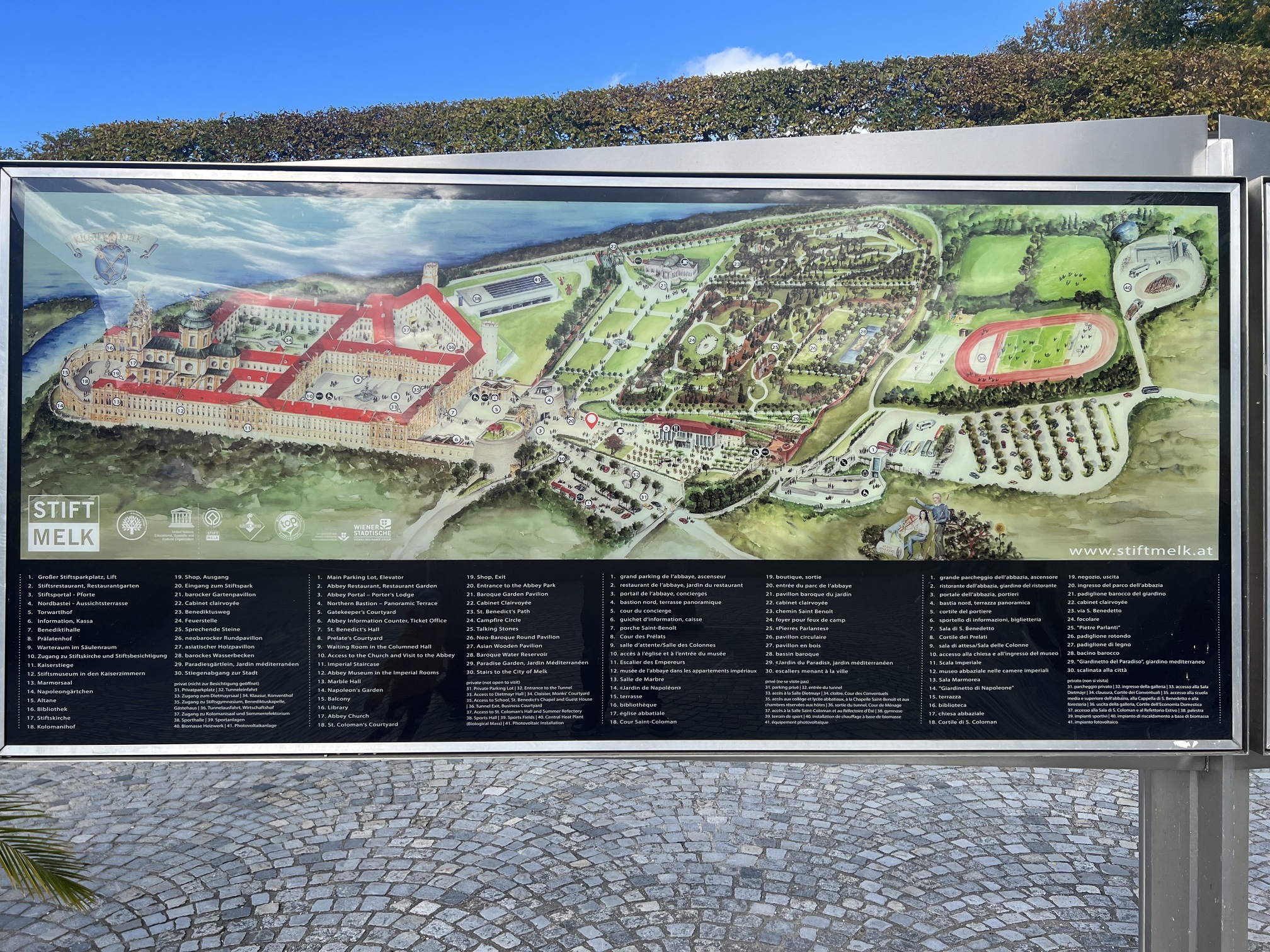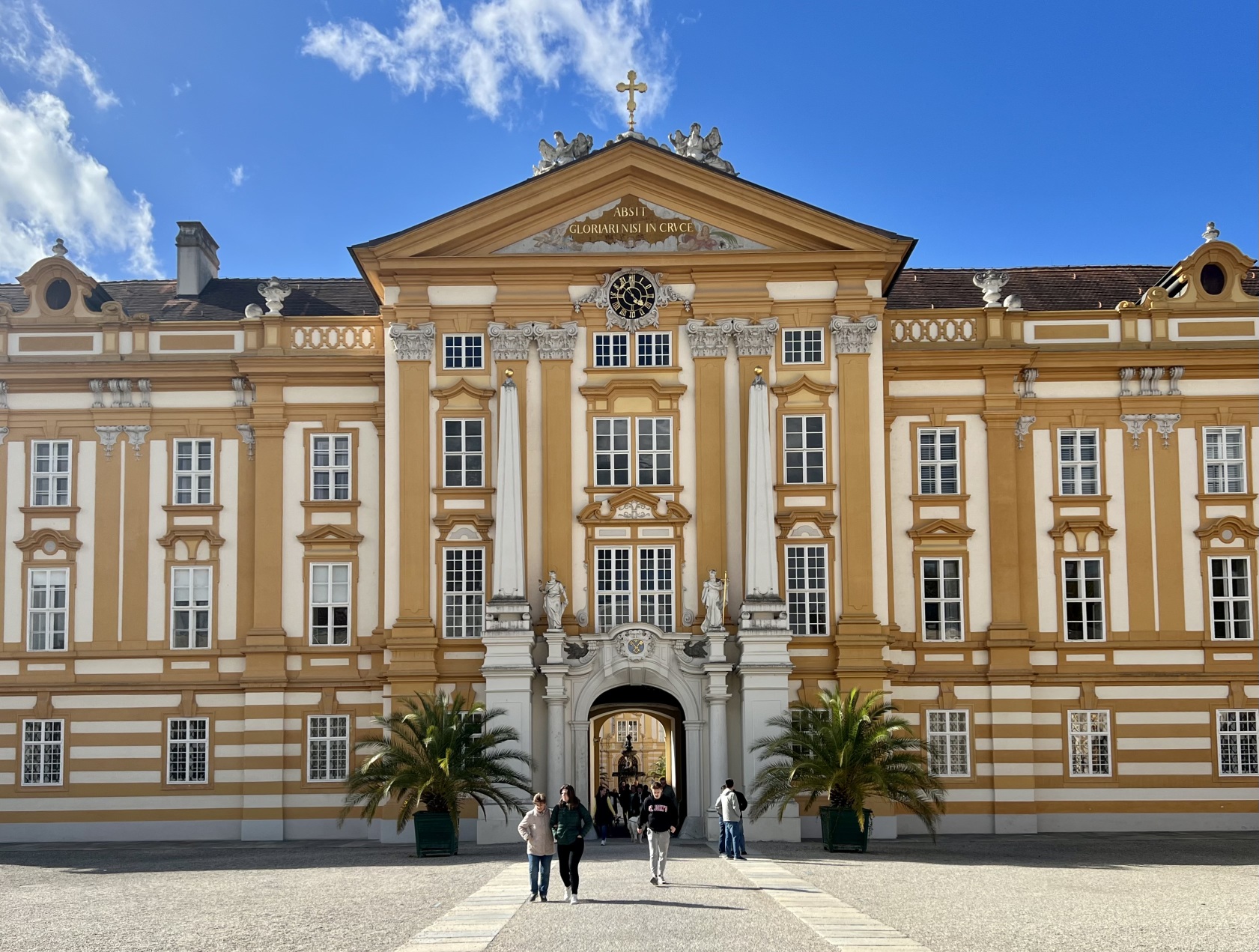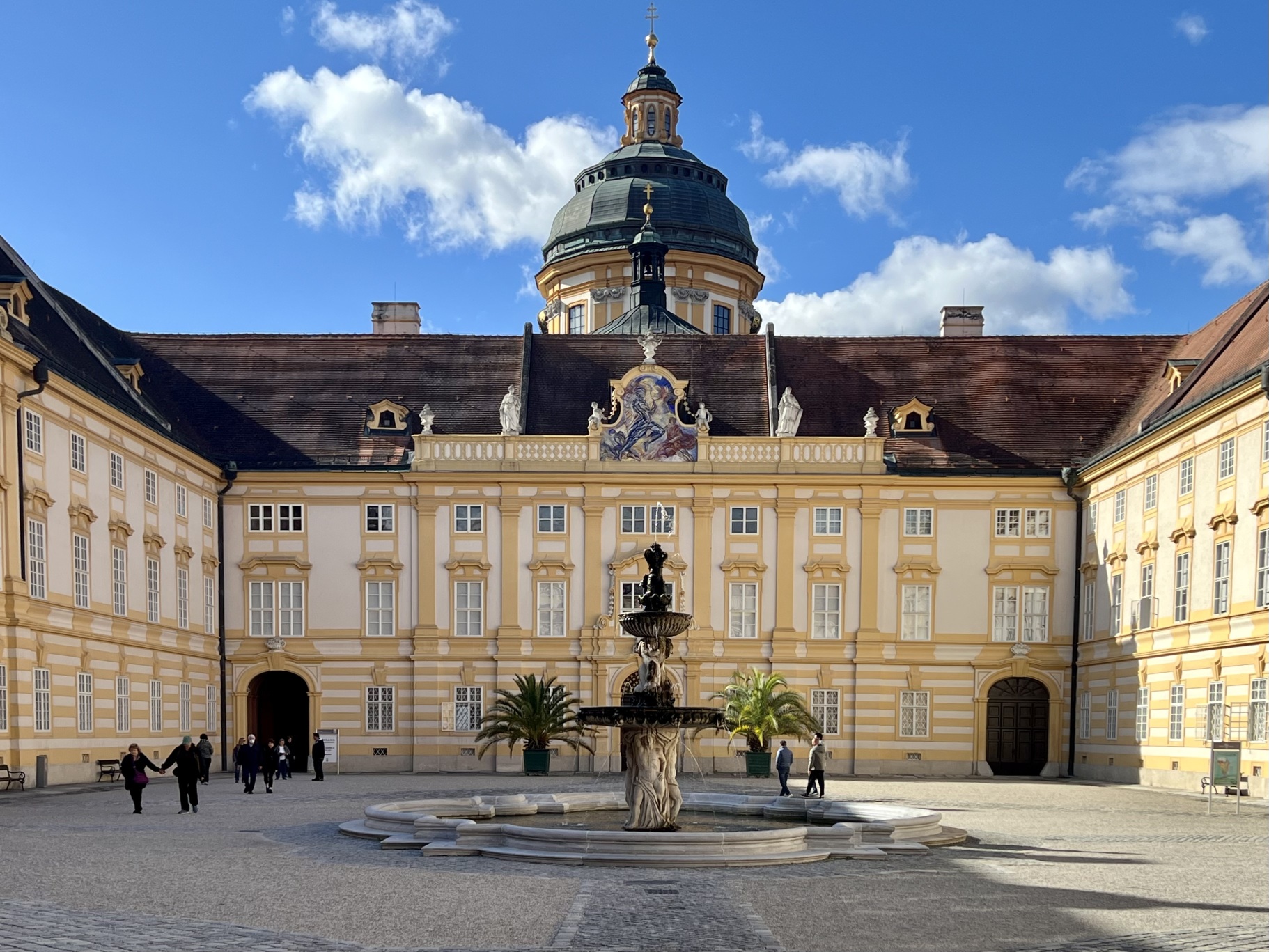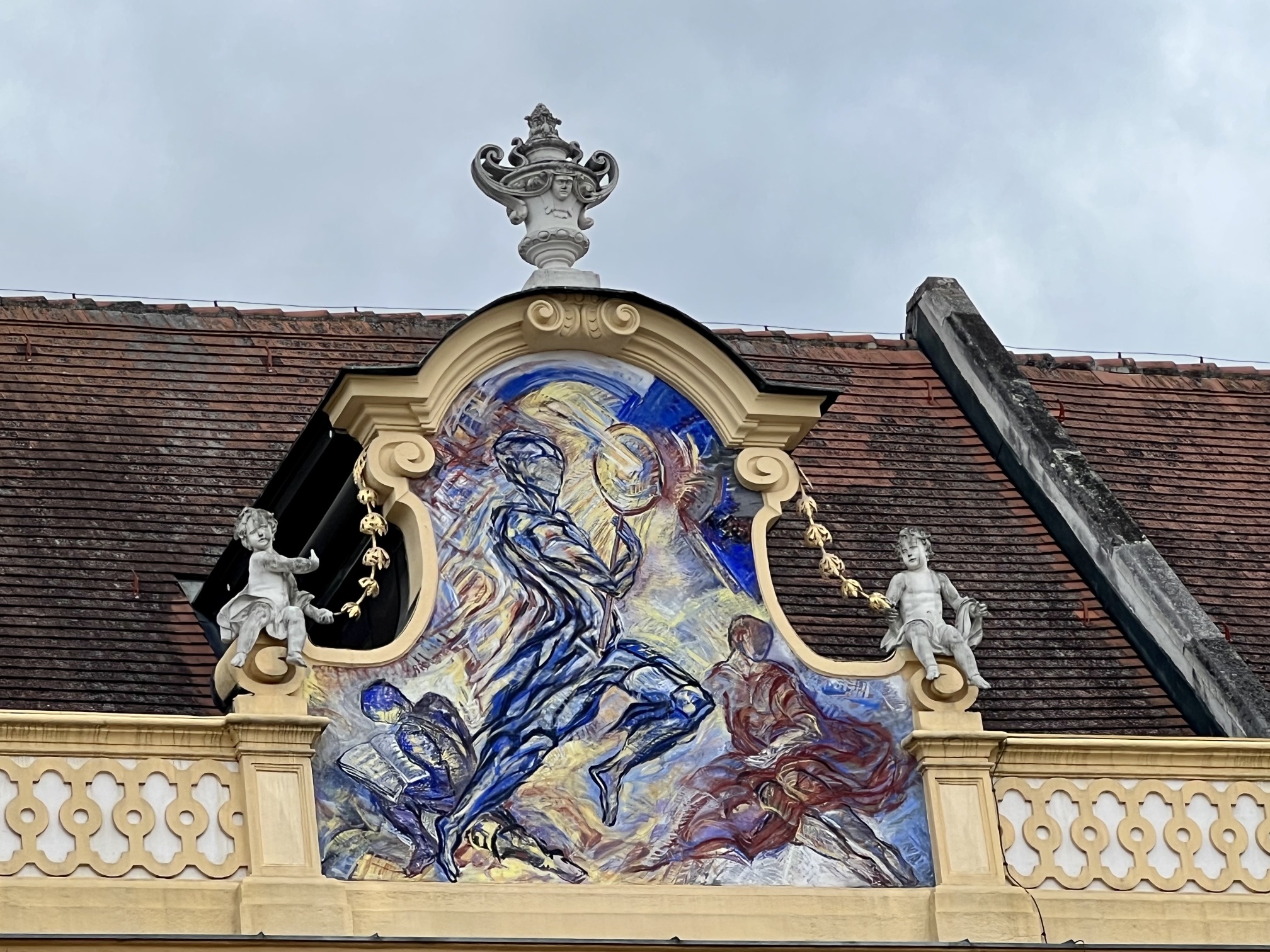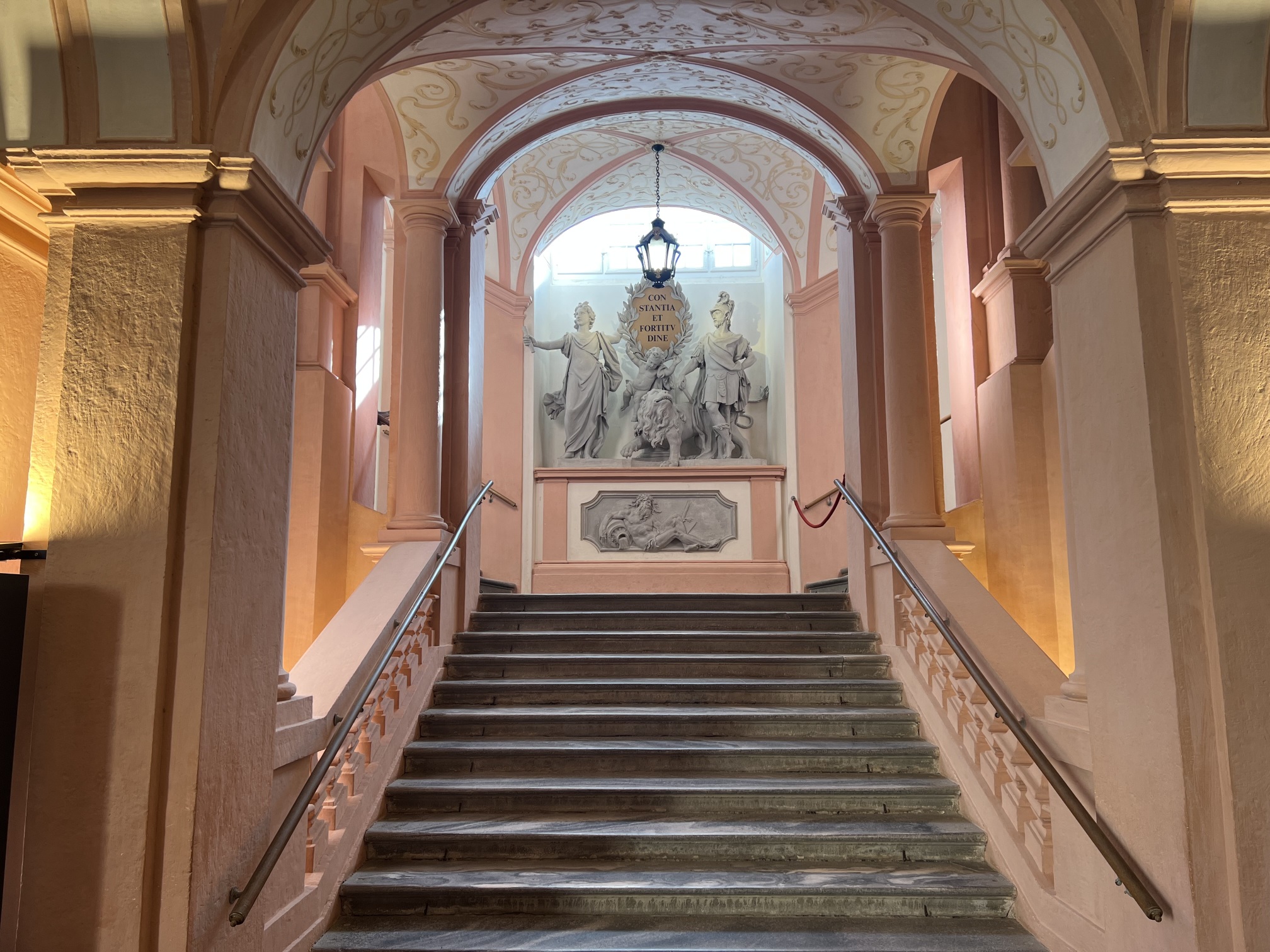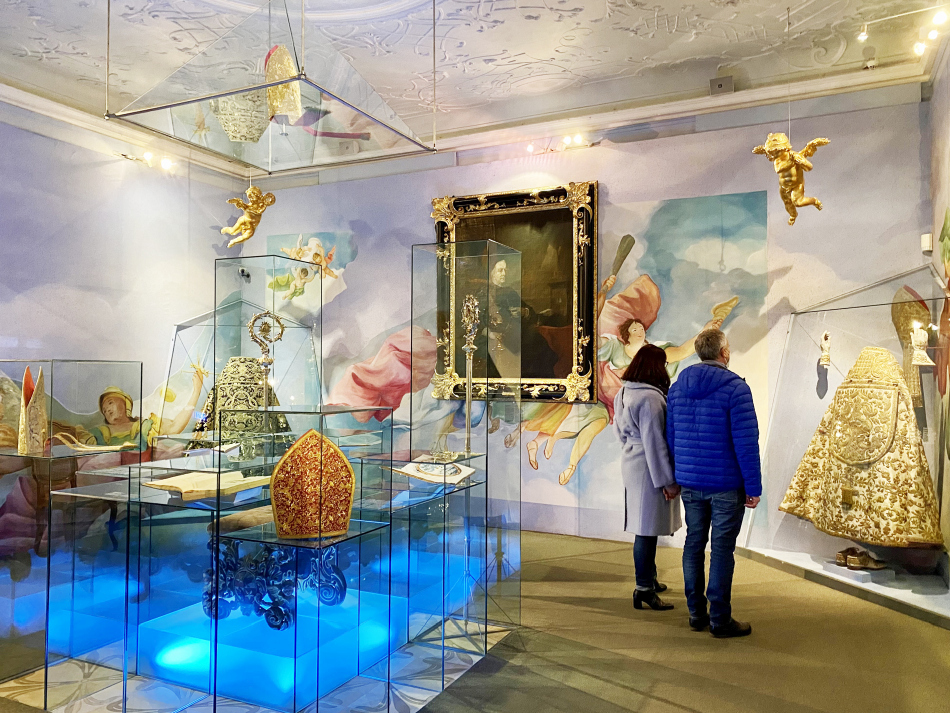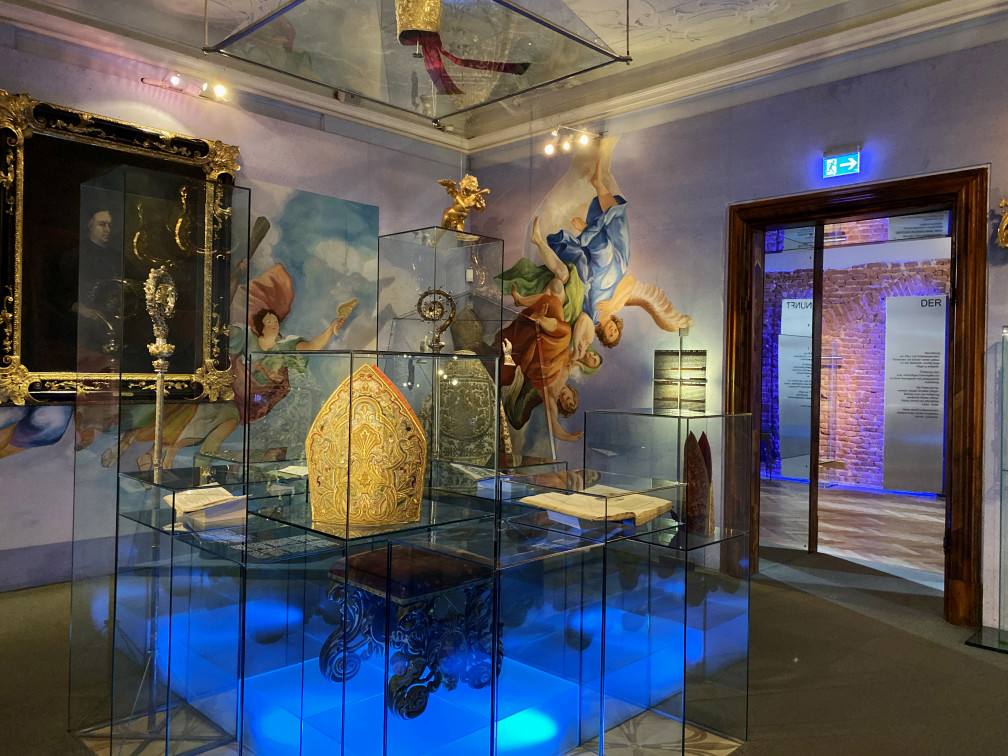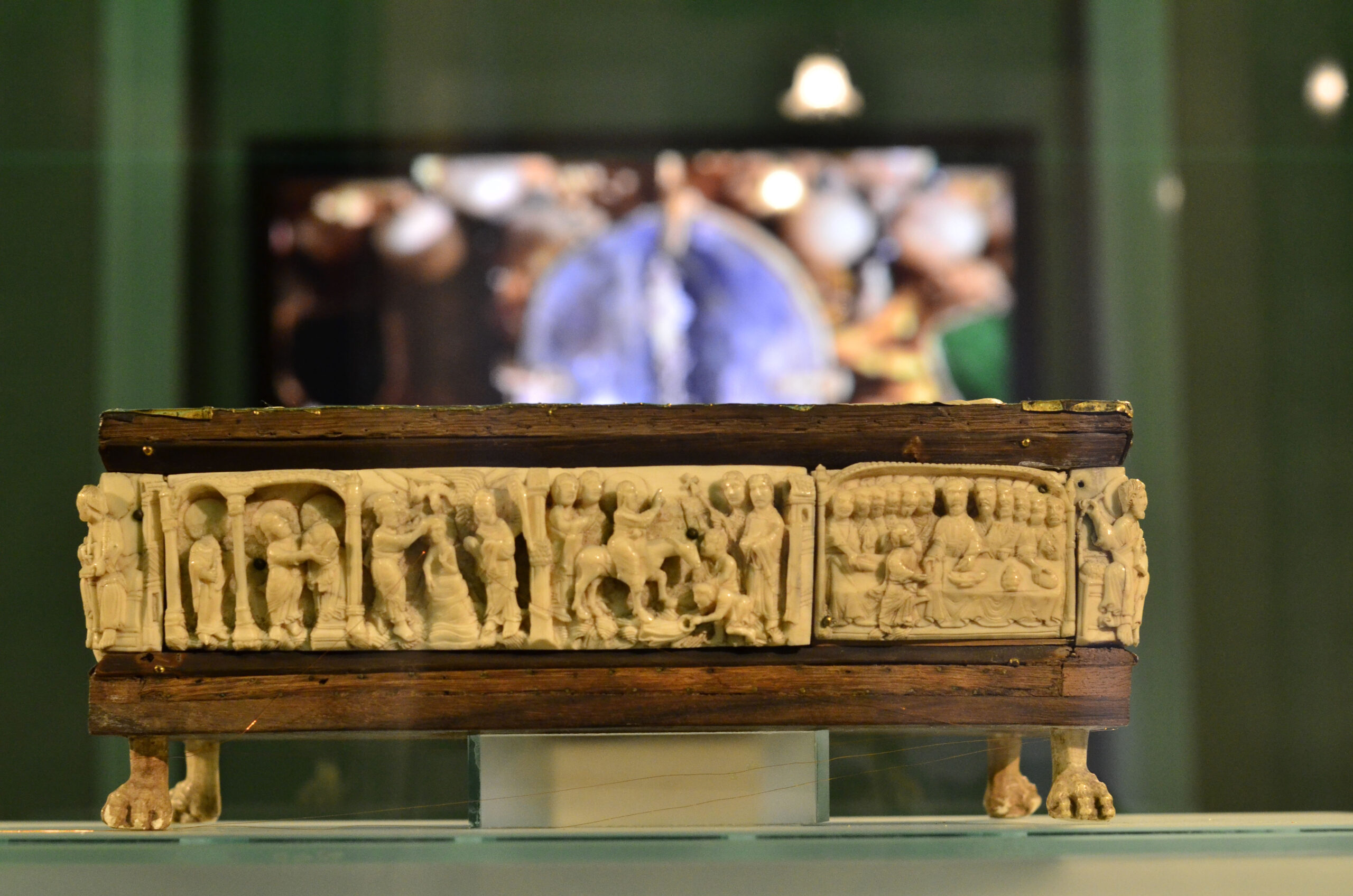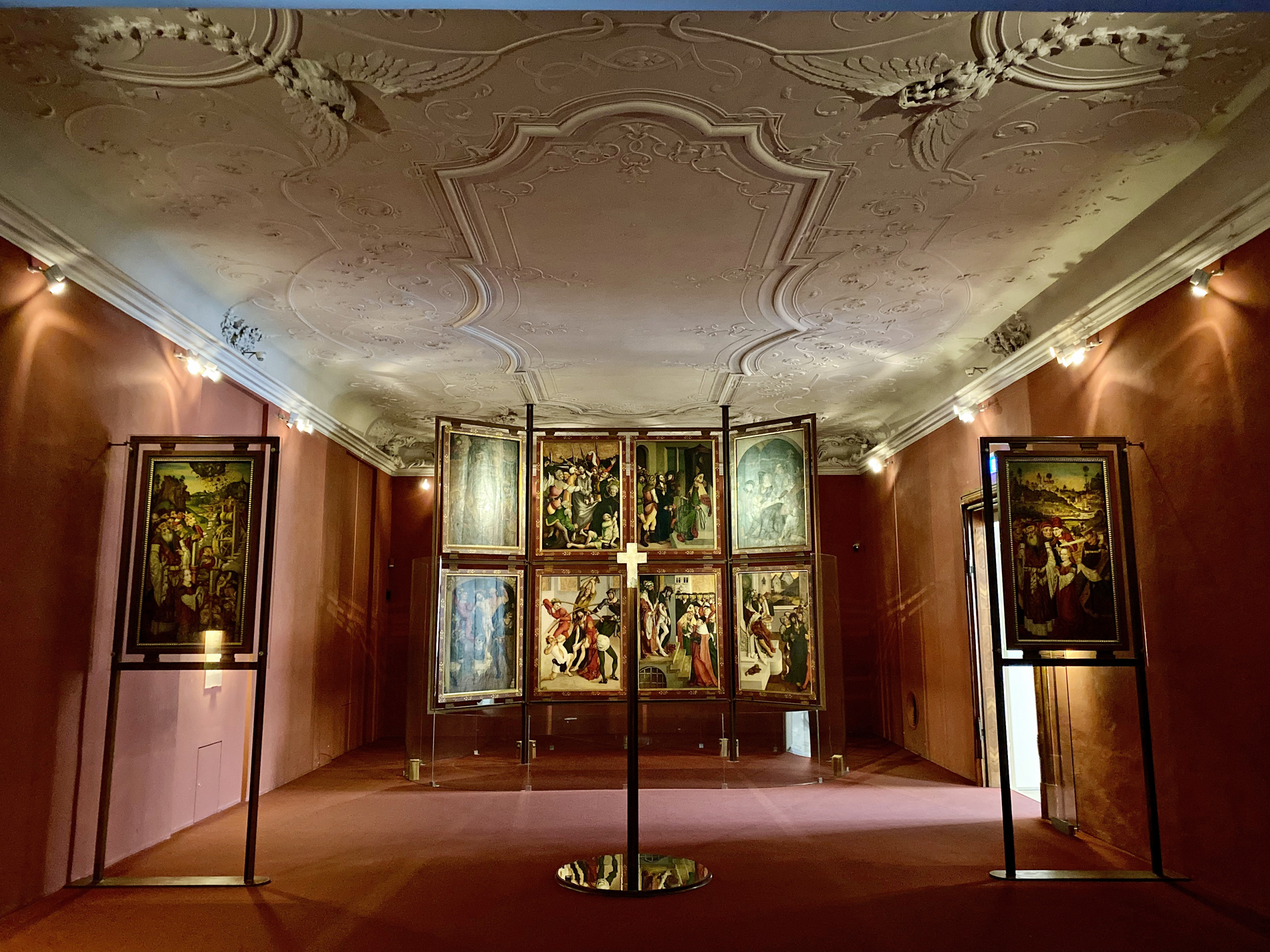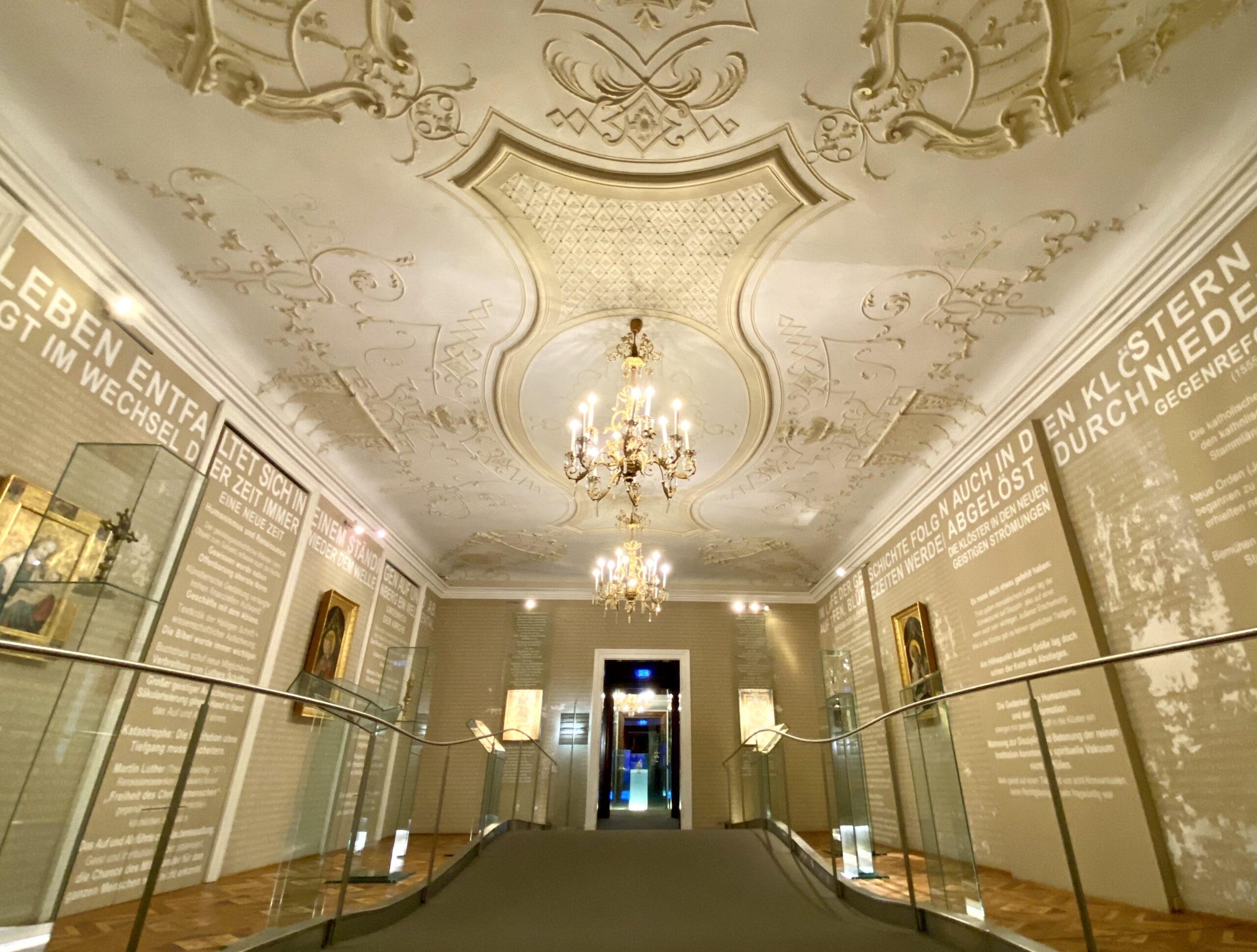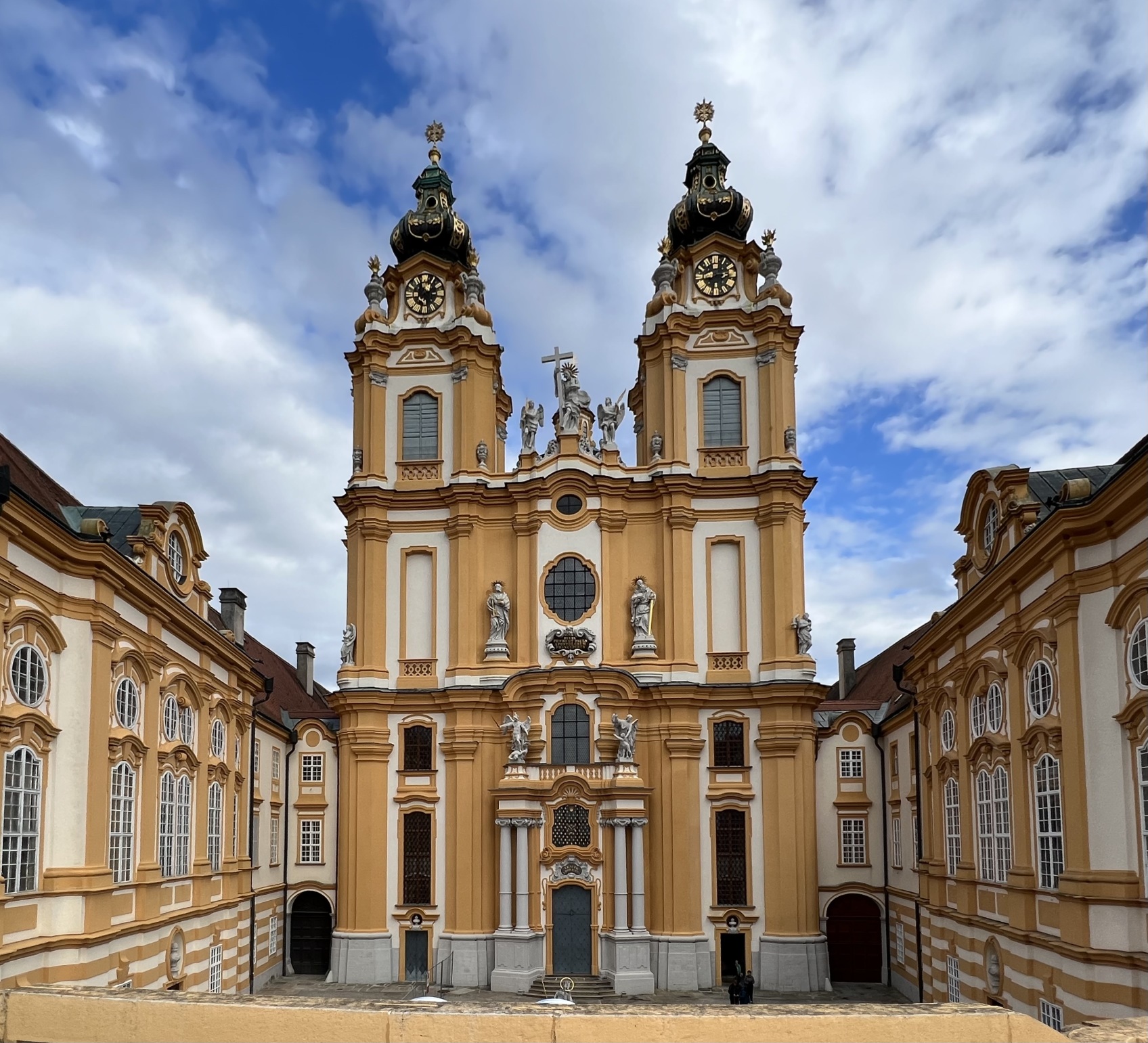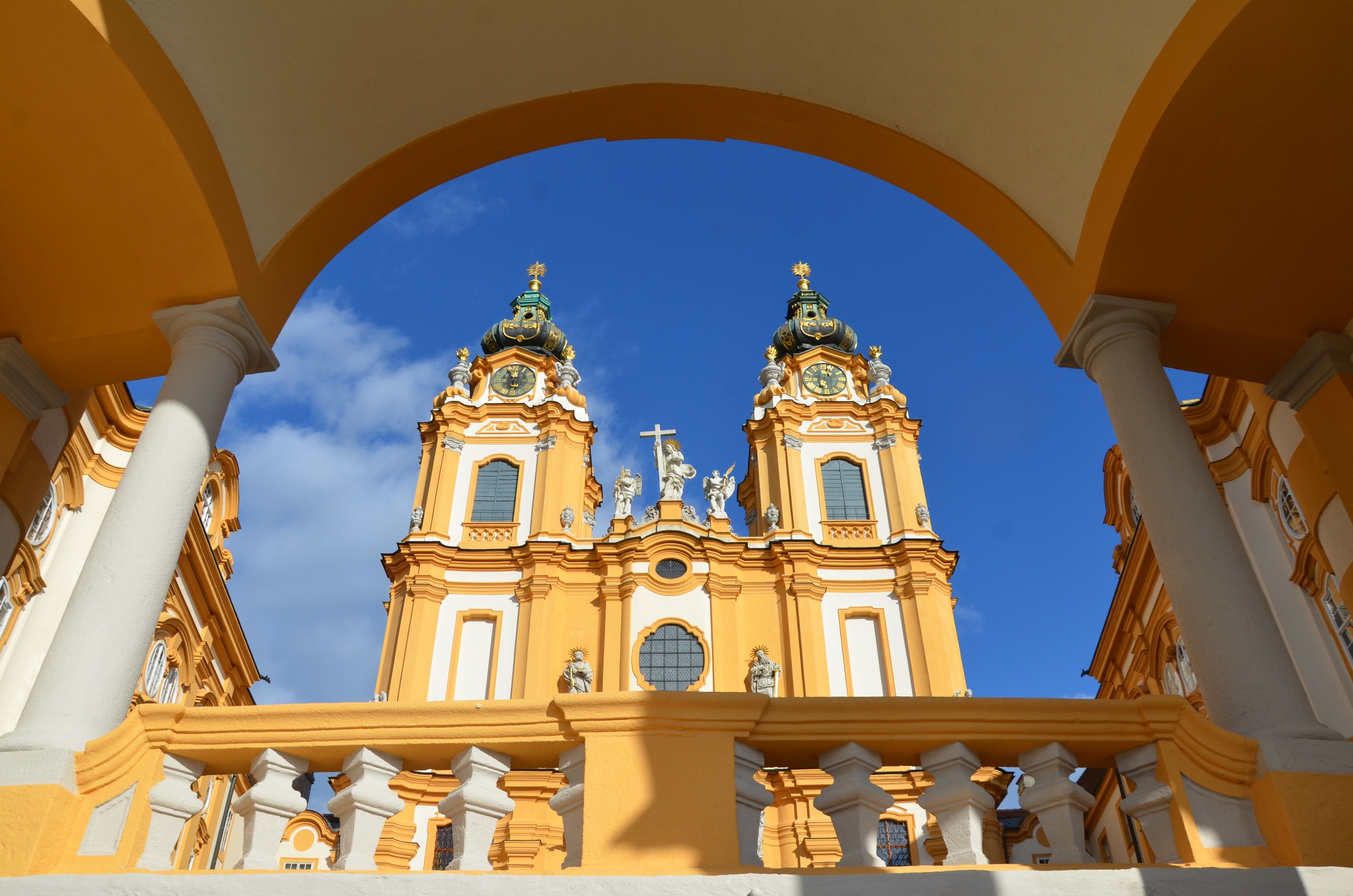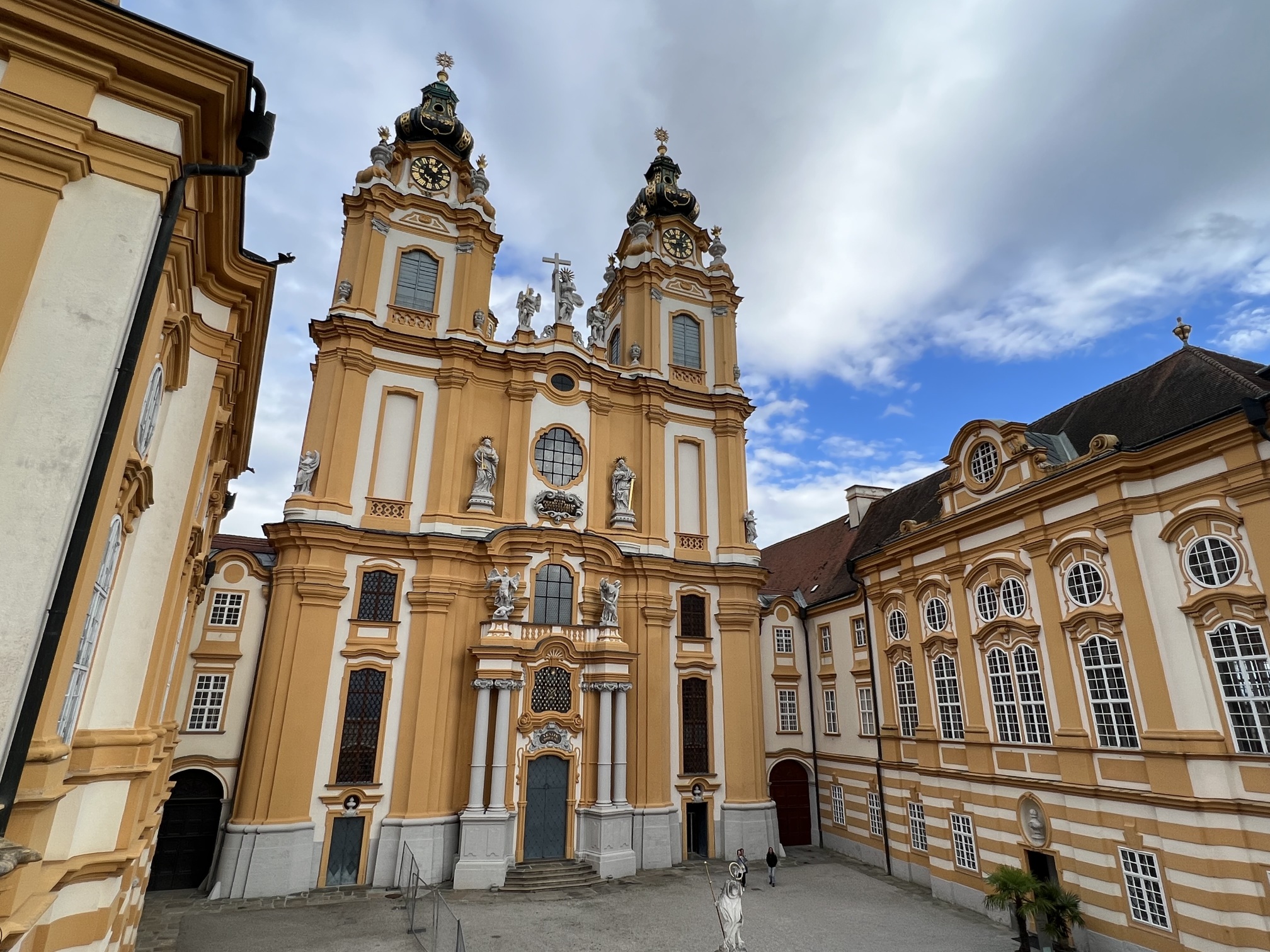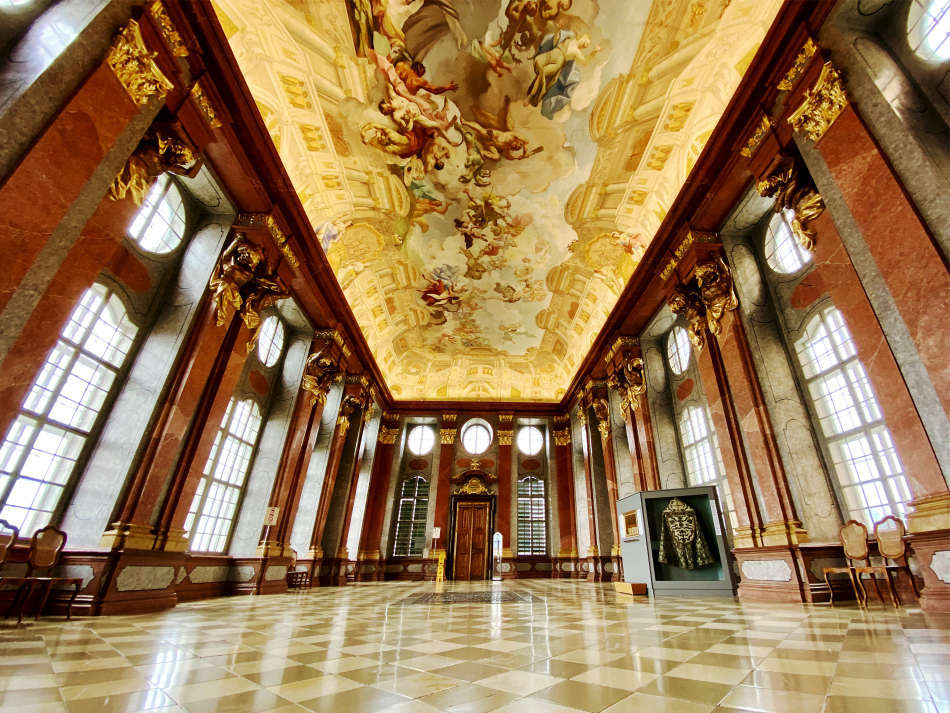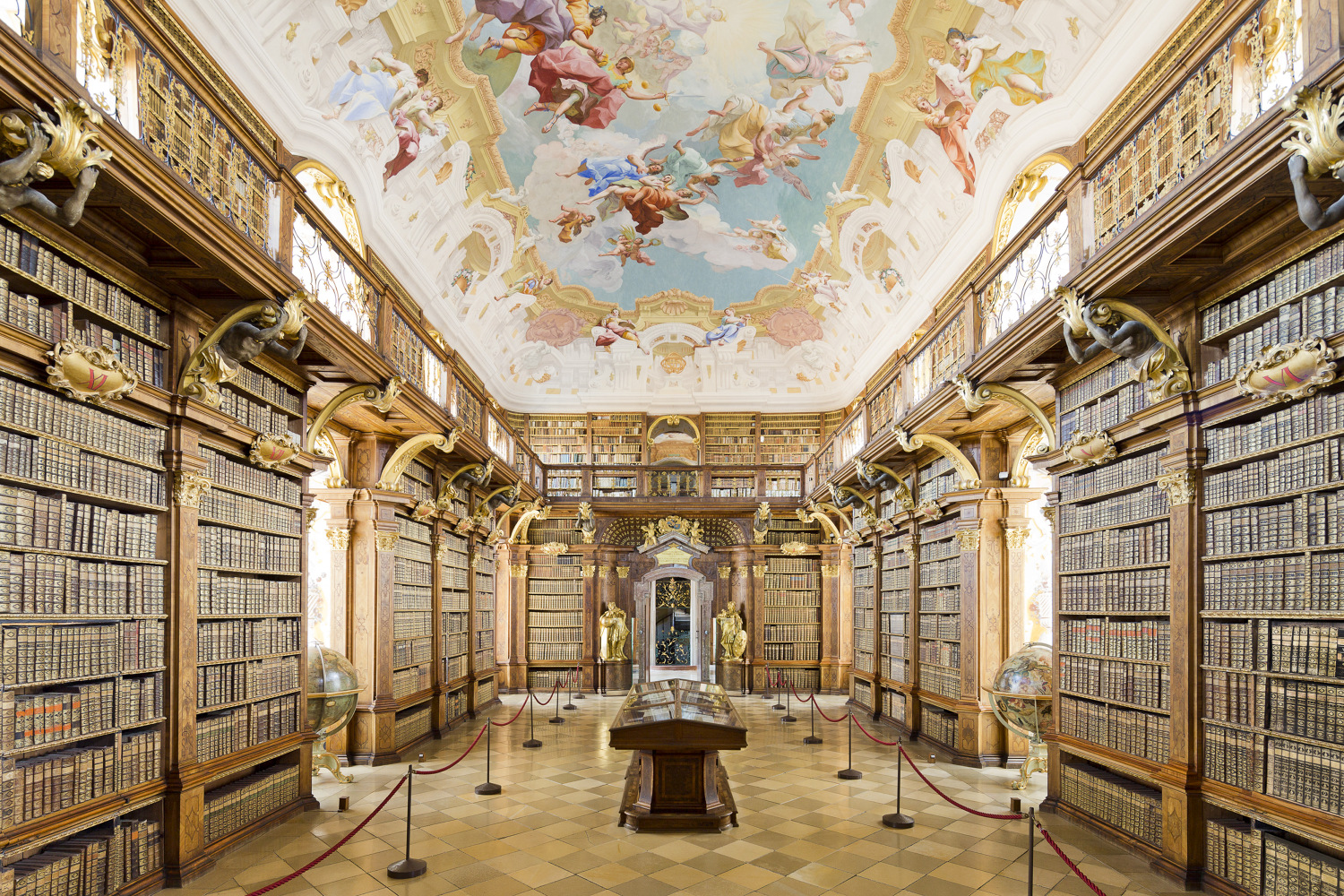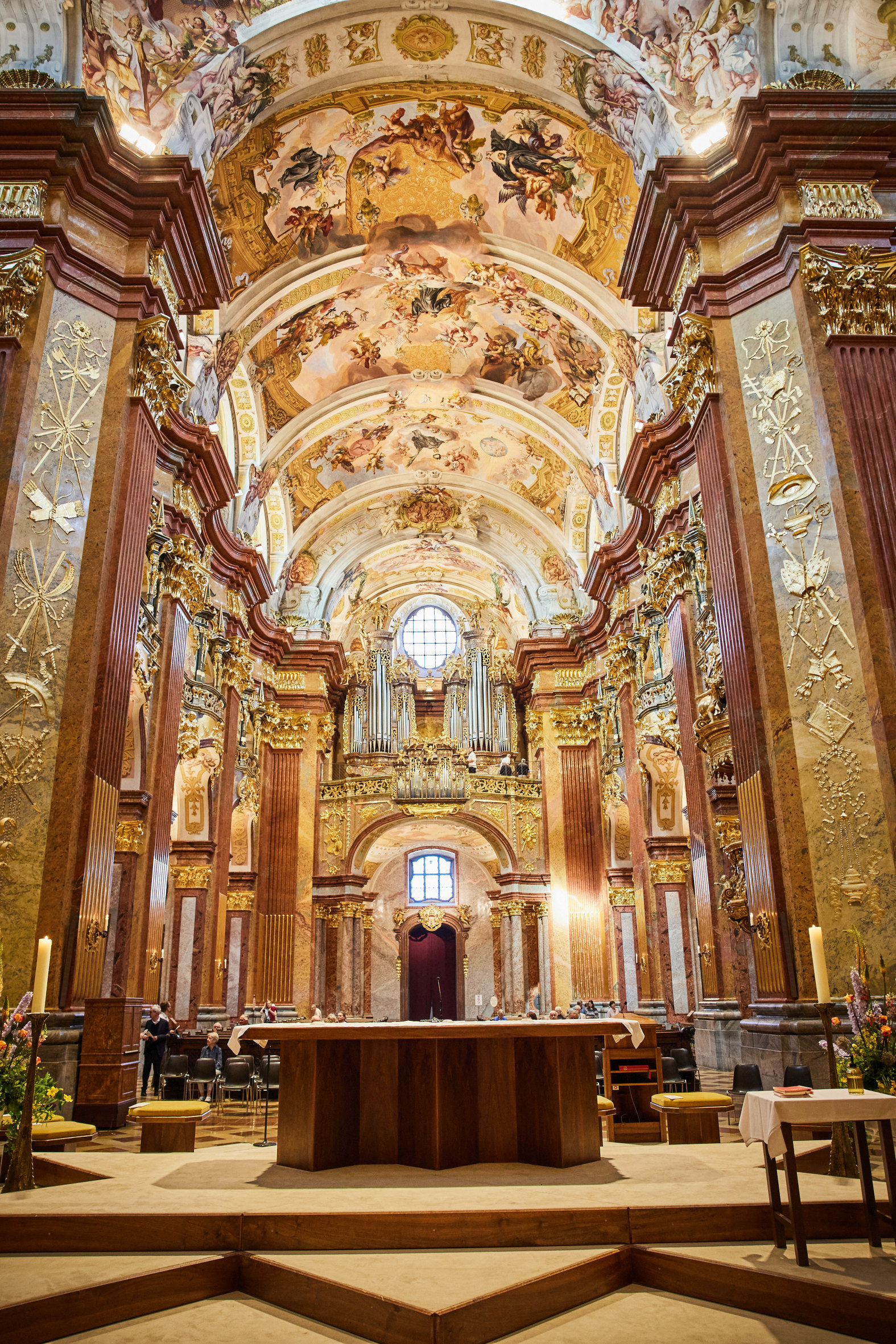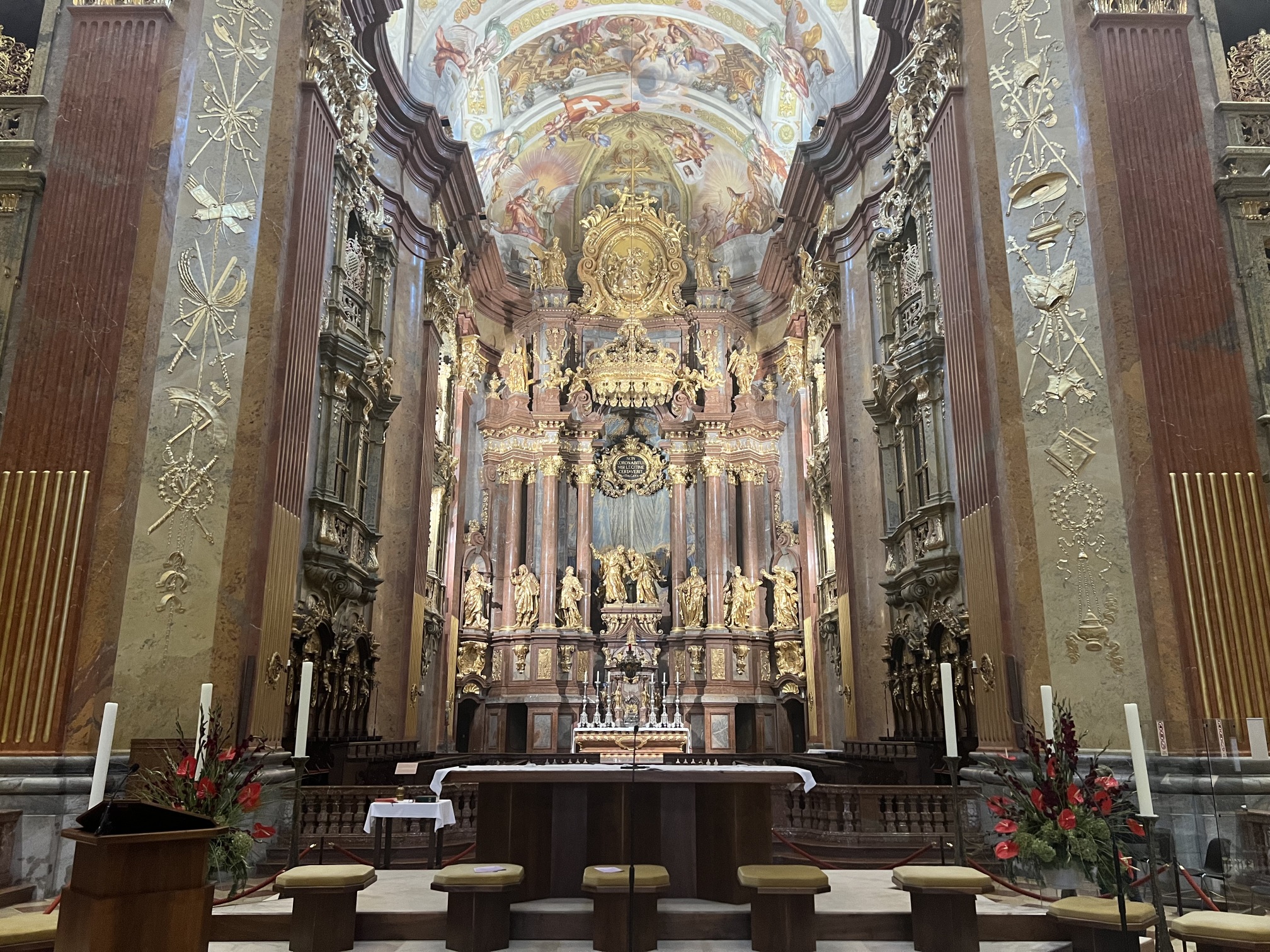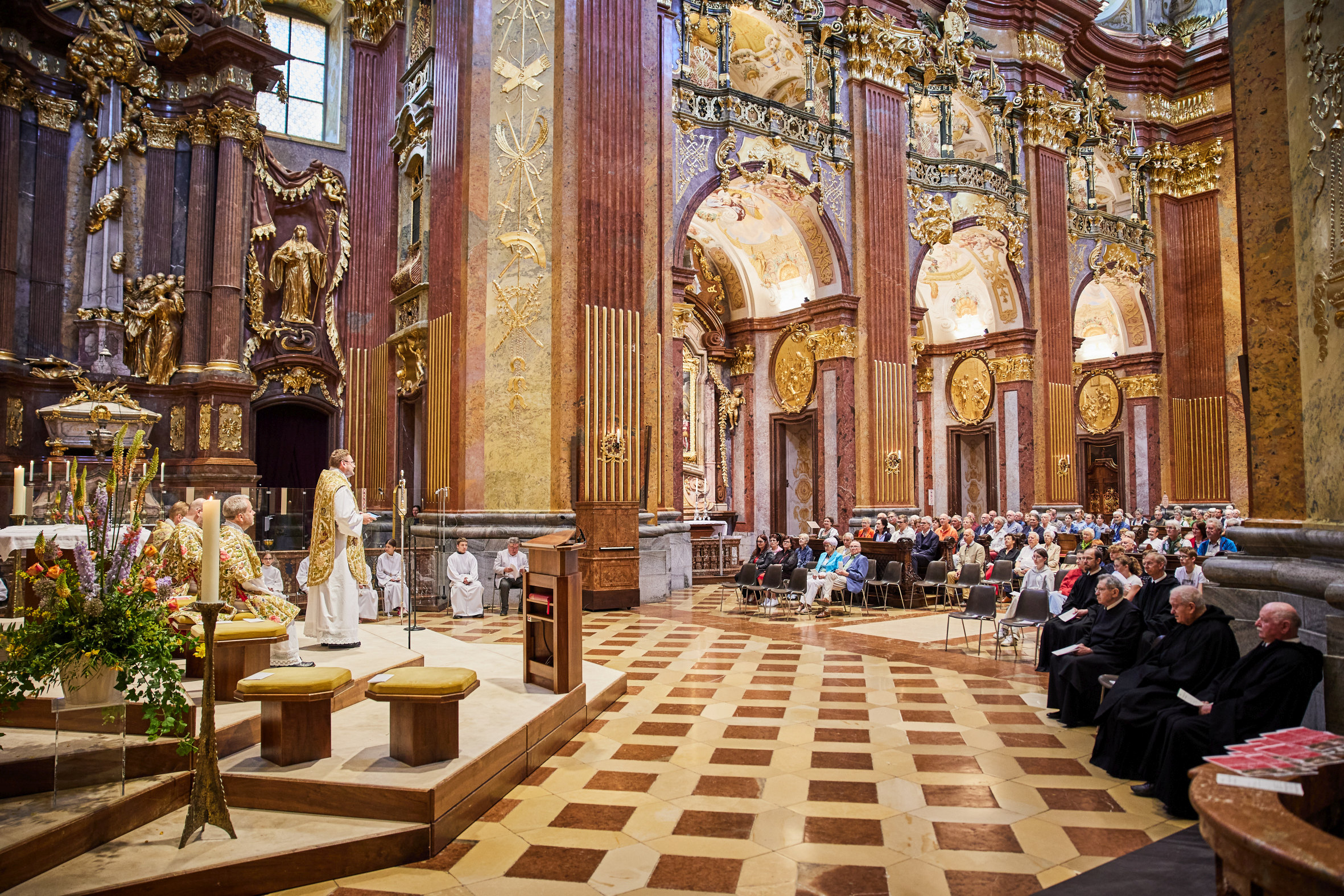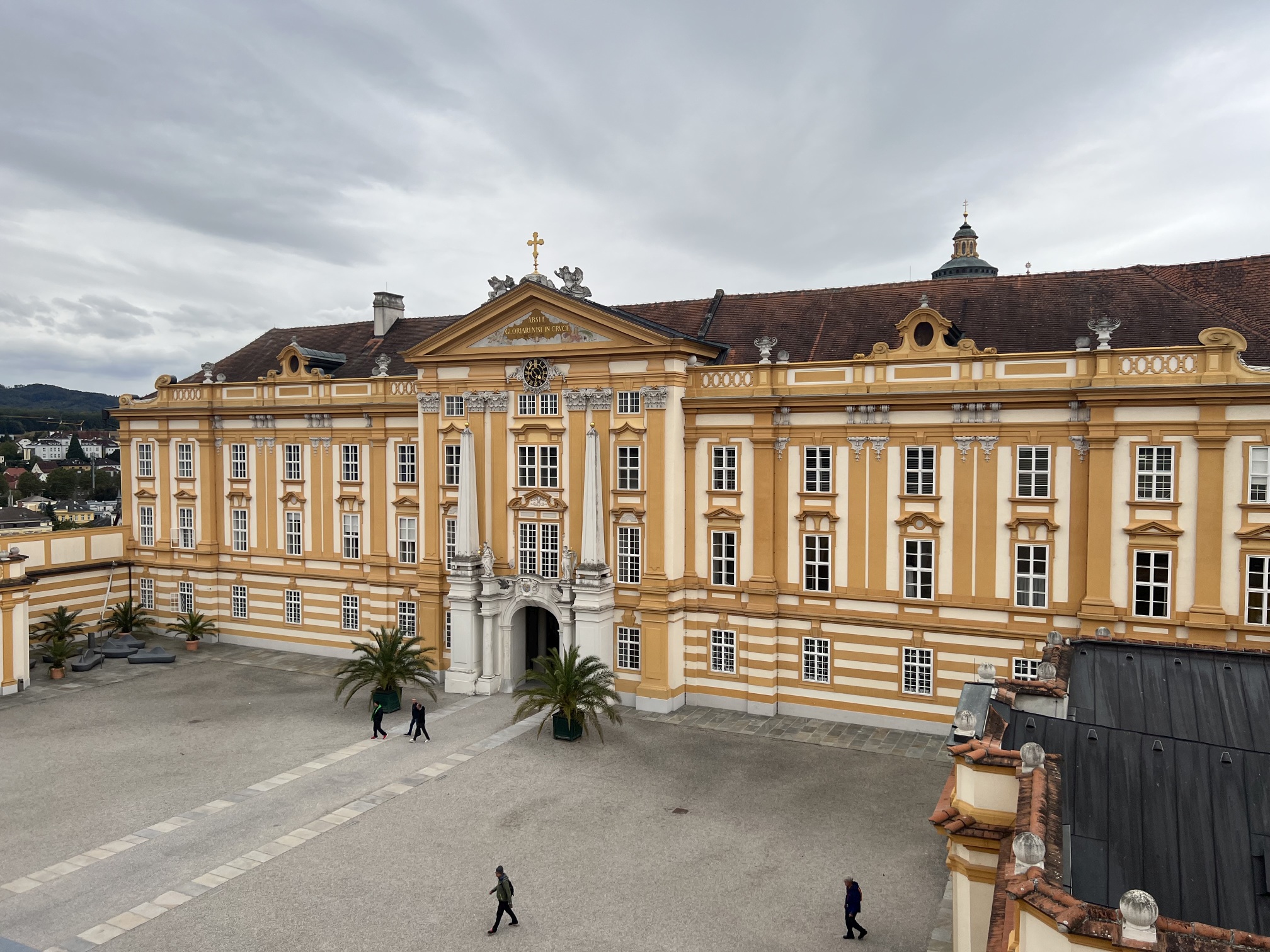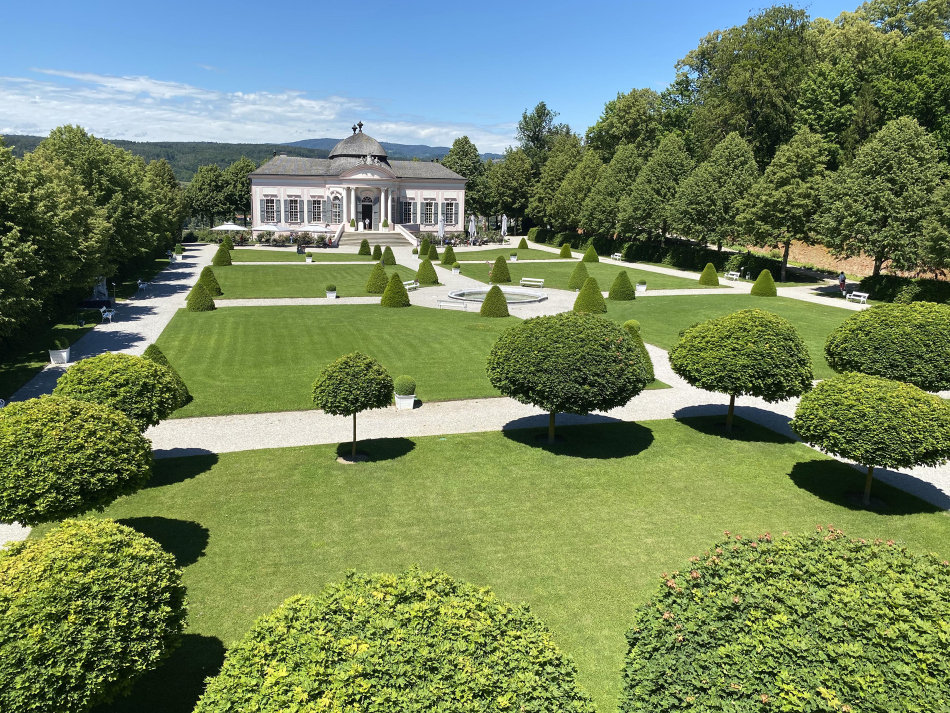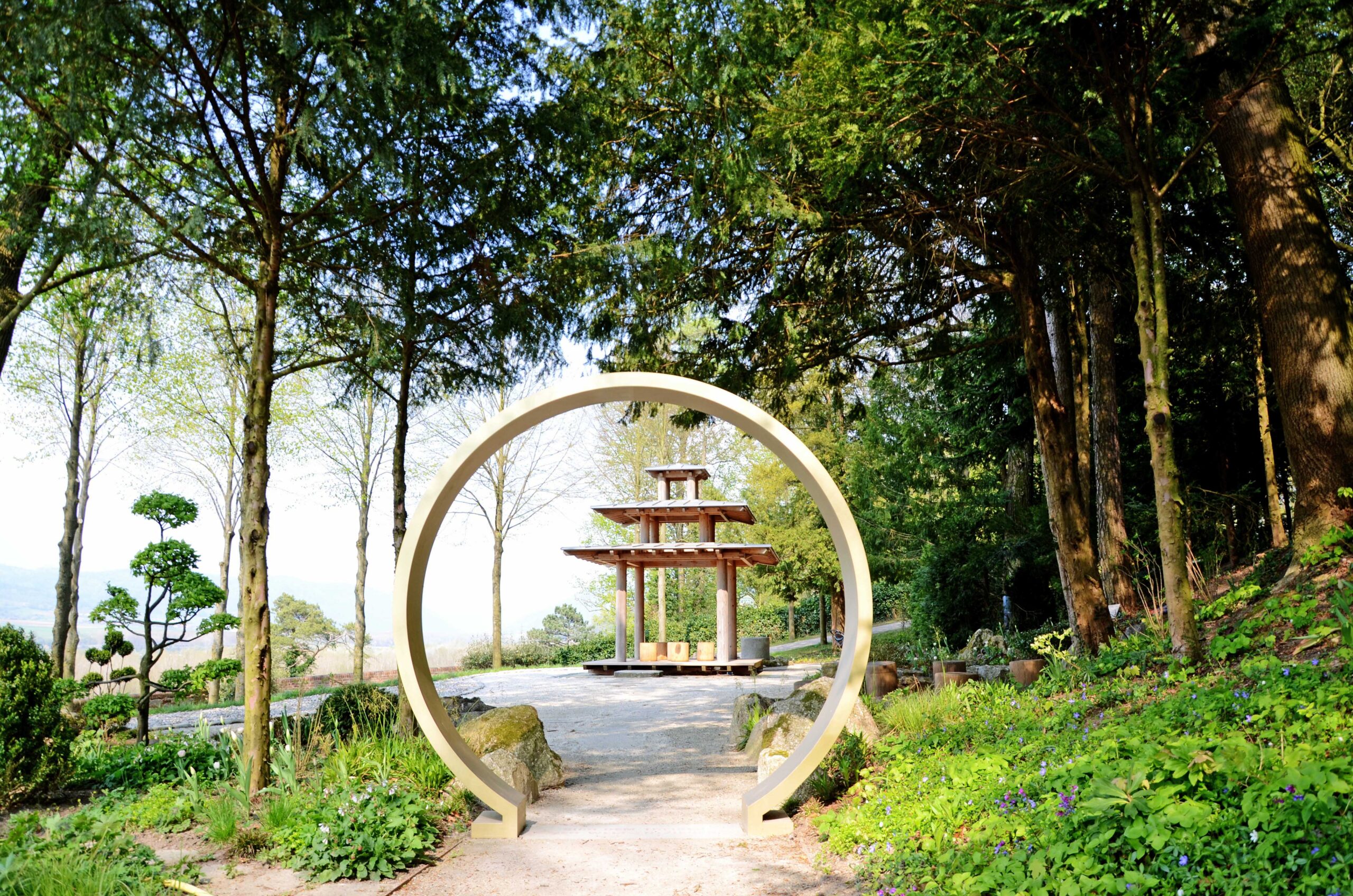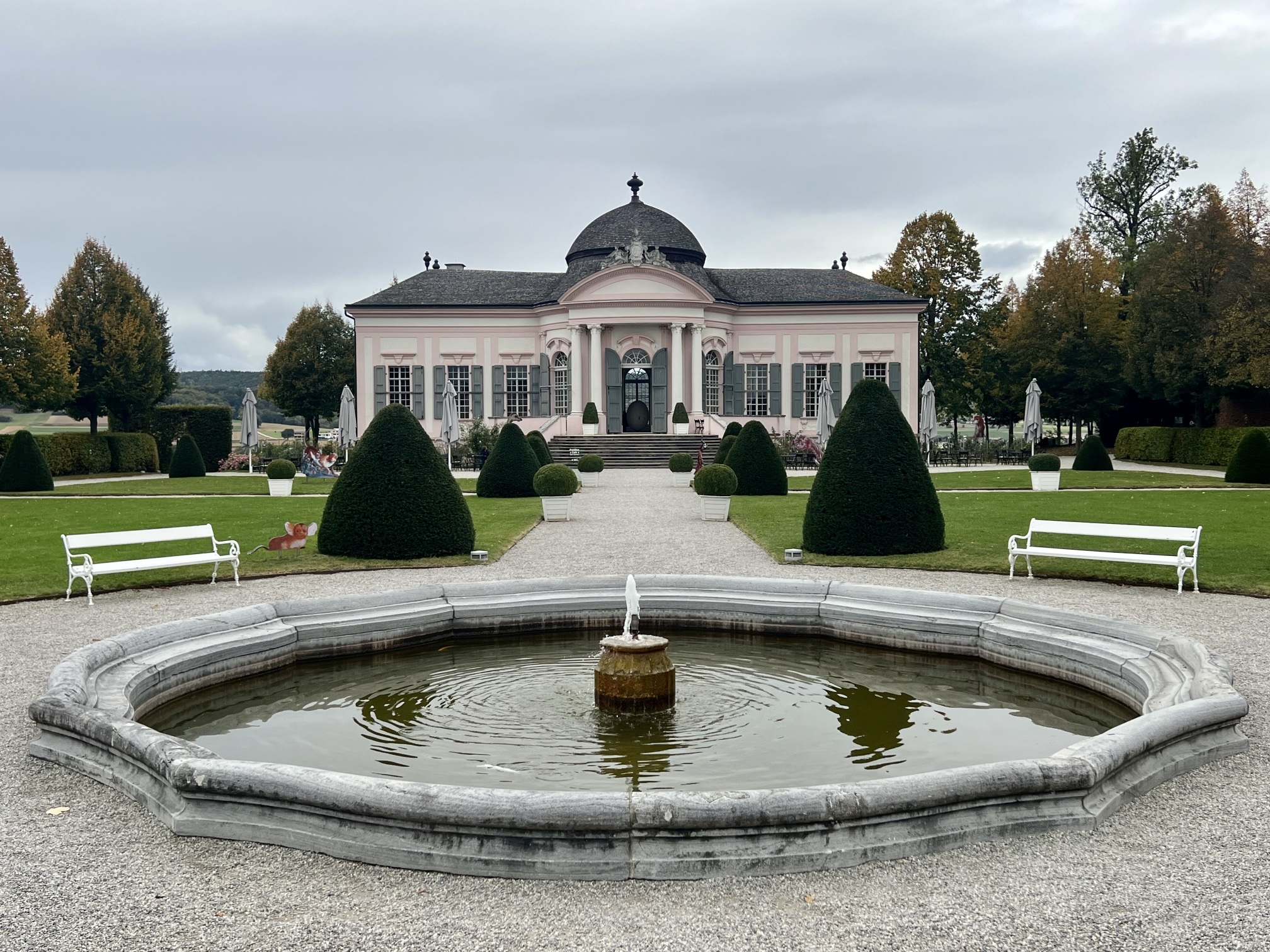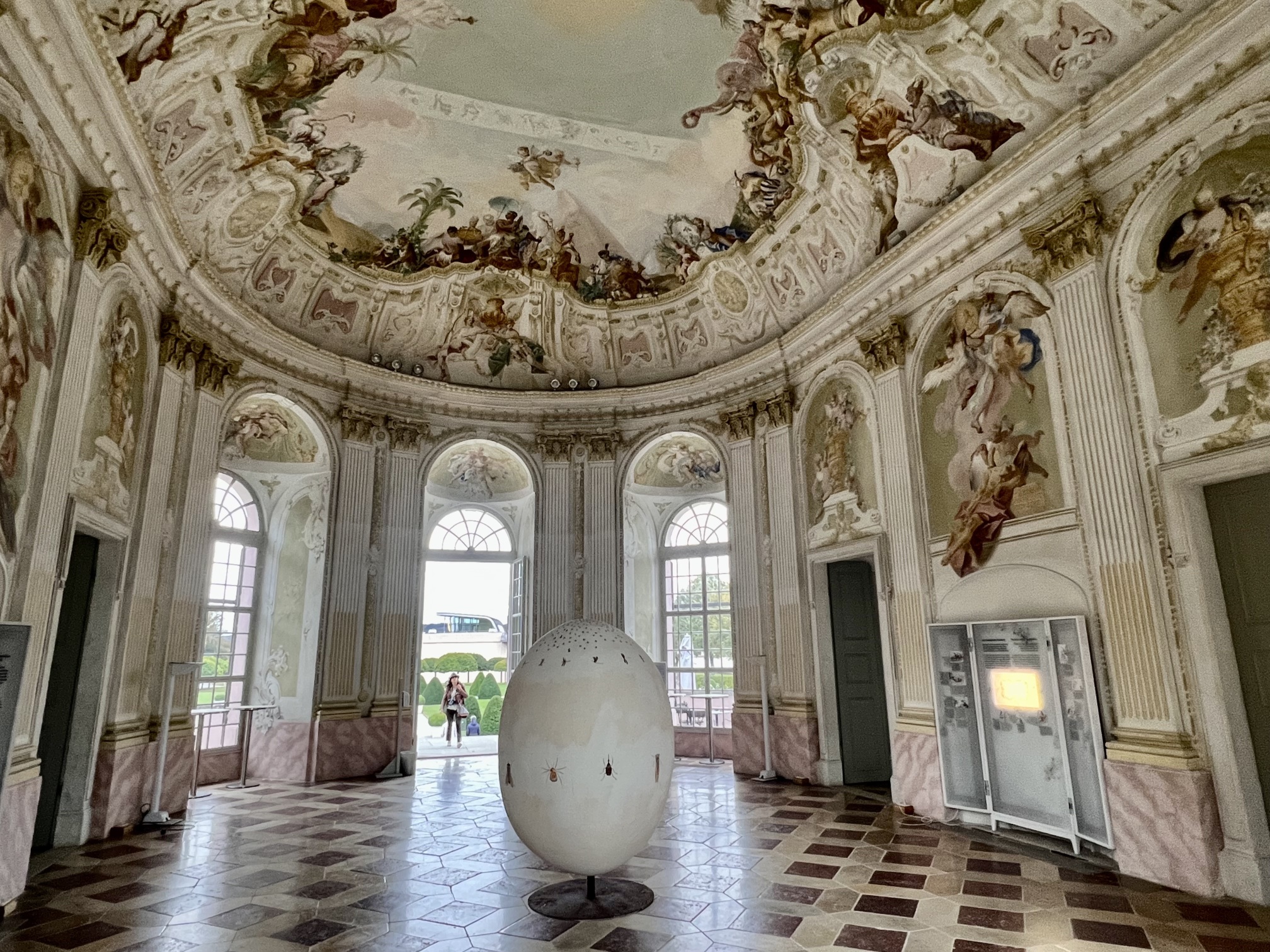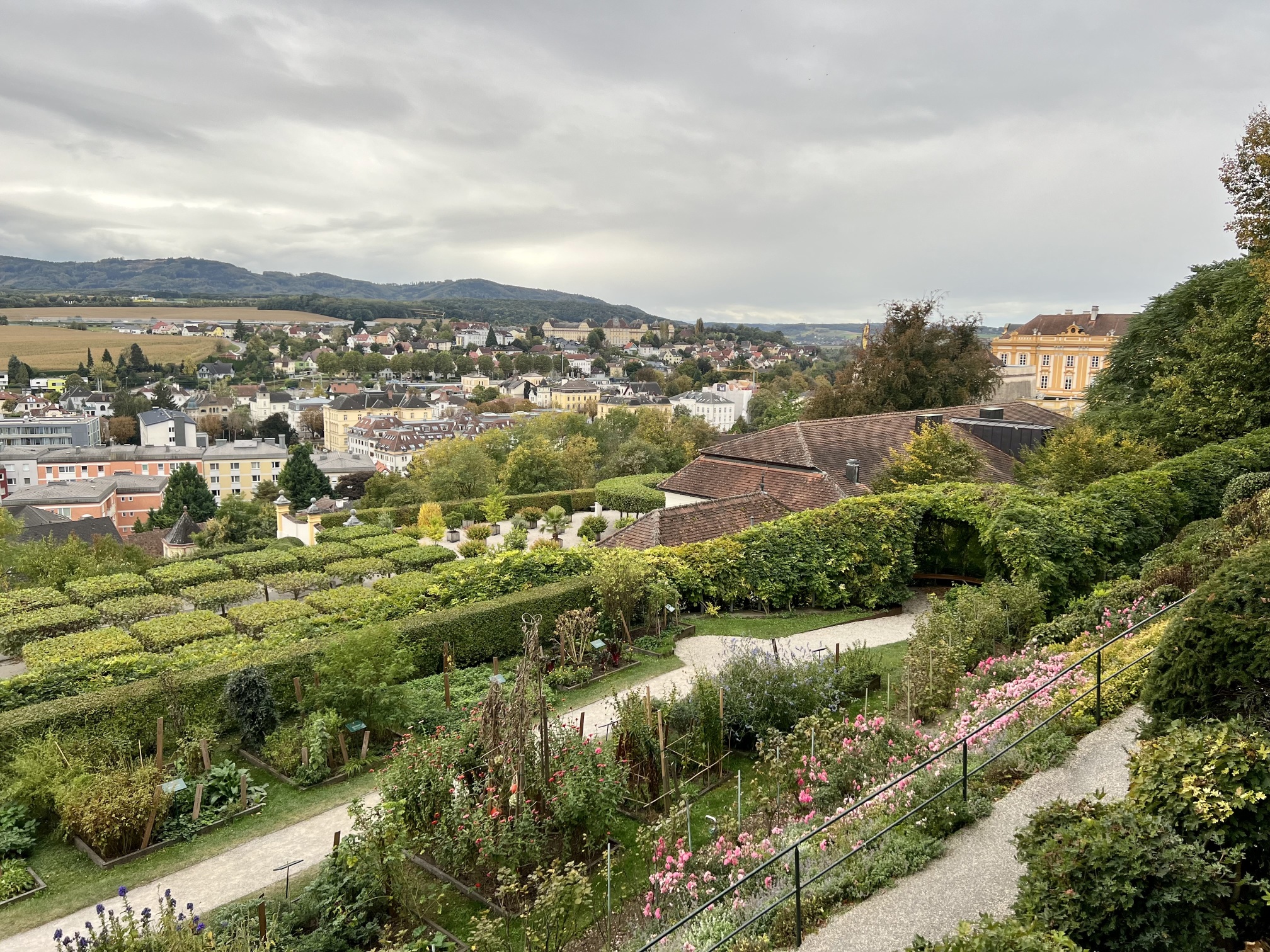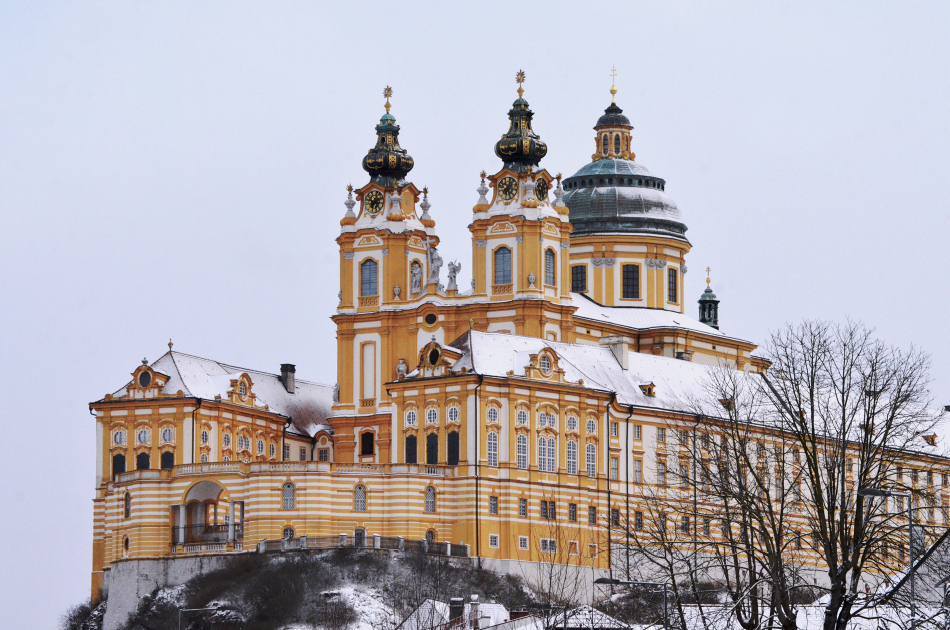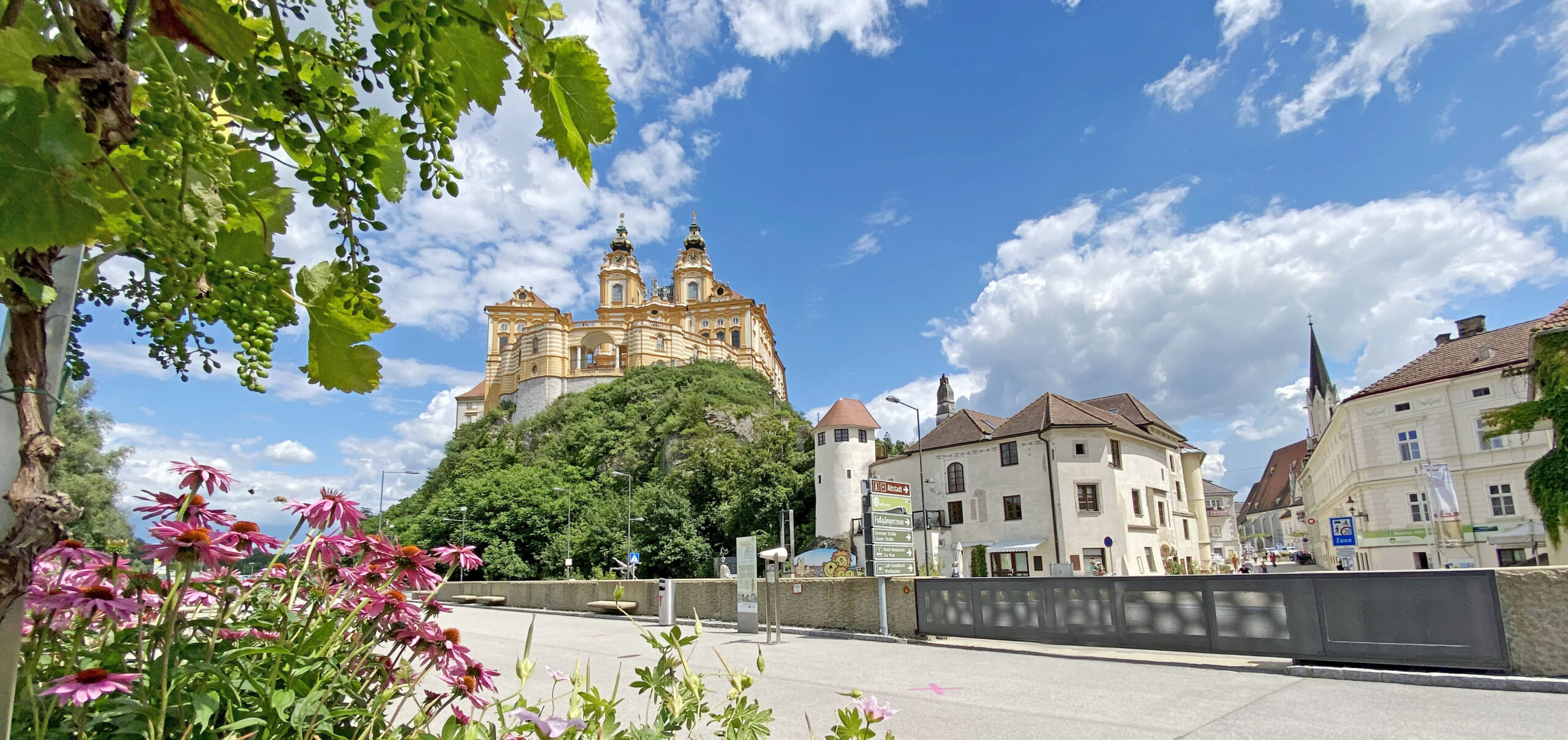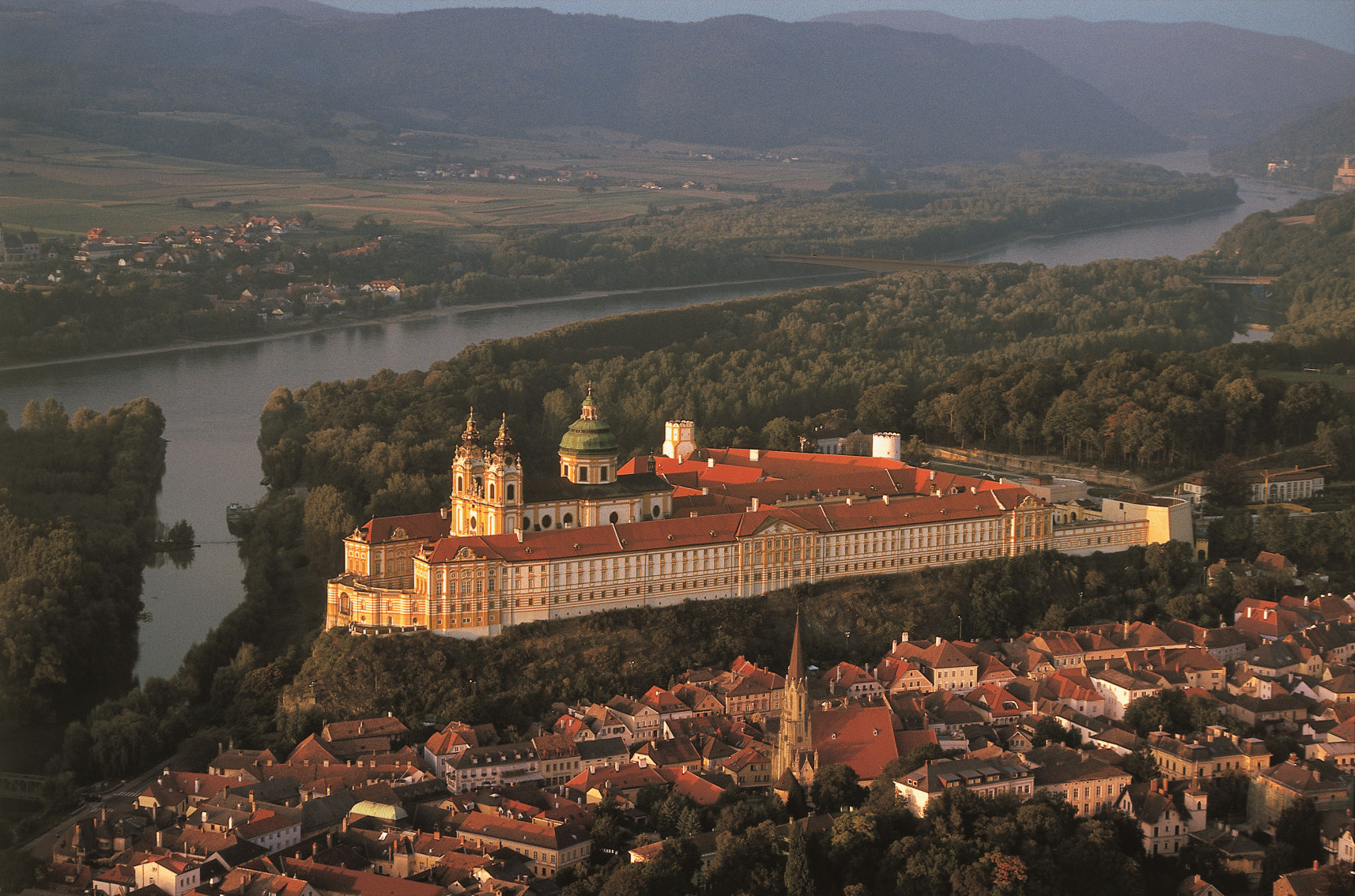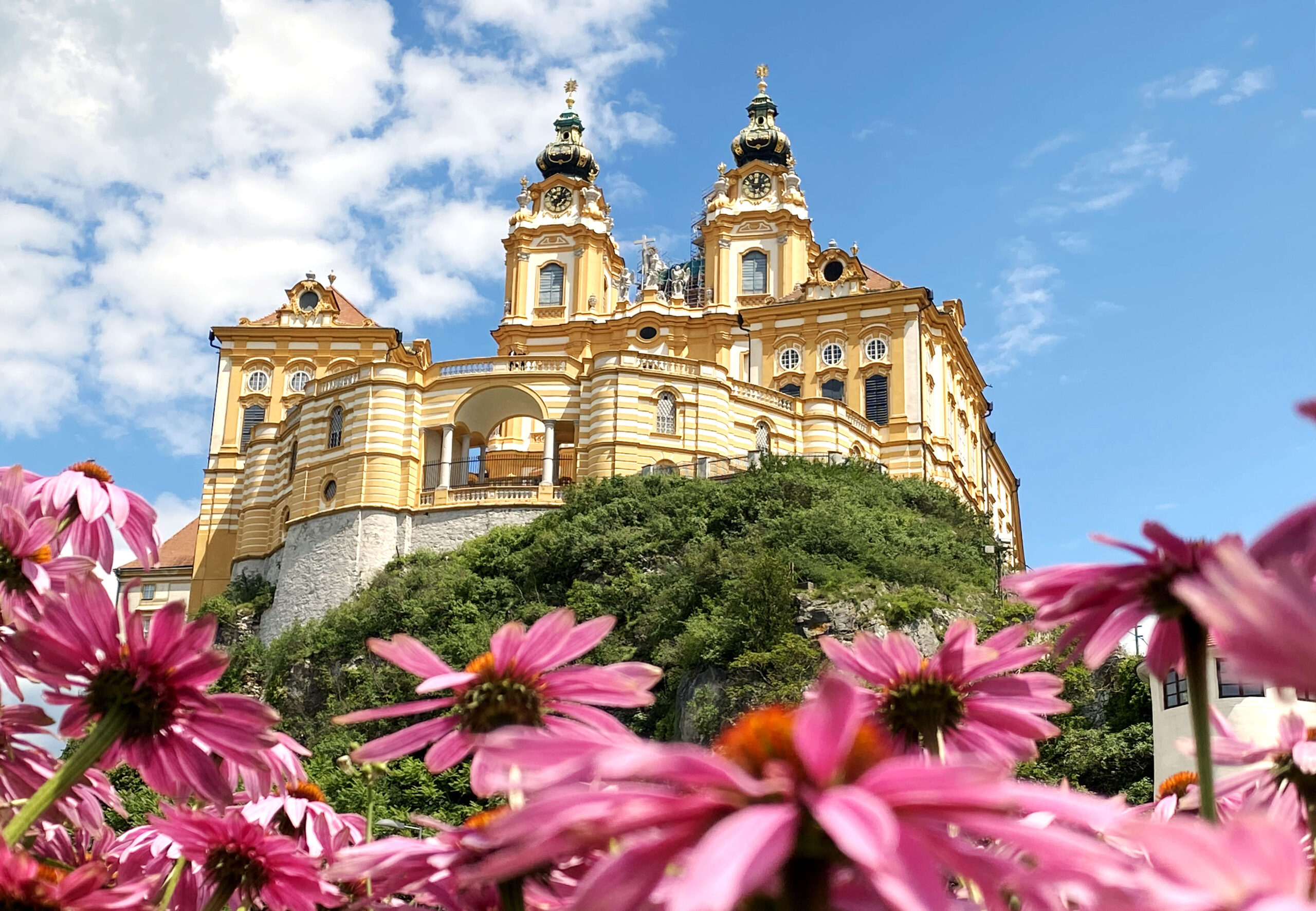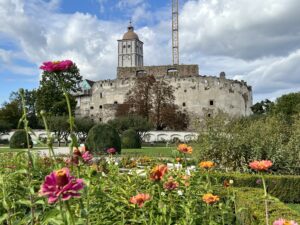Brief information about Melk Abbey:
- What is the Benedictine Abbey of Melk? An impressive Benedictine monastery and cultural center in Melk, Lower Austria
- Where is it located? Stiftsstraße 1 / 3390 Melk
- What is there to see? Magnificent architecture, library, collegiate church, collegiate museum, and breathtaking views of the Danube.
- How much is the entrance fee? All Prices, discounts and opening hours can be found here. With the Lower Austria Card the one-off admission is free.
- How much time should I allow? At least 2-3 hours for a complete tour.
General information about the Benedictine Abbey of Melk
Melk Abbey, a Benedictine abbey, is an architectural masterpiece that rises majestically above the town of Melk in Austria. Originally founded in the 11th century, this monastery impresses with its baroque splendor and spiritual significance. It houses an impressive library, an imposing abbey church and the fascinating abbey museum. But the real jewel is the breathtaking view of the Danube from the abbey terrace. As a landmark of the Wachau region, it is a UNESCO World Heritage Site.
Entrance system
Visitors usually come to the east side of the complex via the spacious car park. The monastery's portal, built in 1718, is flanked by two bastions. One of these bastions originally served as a defensive structure from 1652. For reasons of symmetry, a second bastion was added to the right side of the portal when the new building was constructed. In front of the portal are statues of Saints Leopold and Koloman, designed by Lorenzo Mattielli in 1716. Angels on the gable of the portal complete the impressive appearance.
If you pass through the portal, you will reach the TorwartlhofOn the right side rises one of the two Babenberg towers, remains of an old fortification, on the left is the Reception and cash desk area.
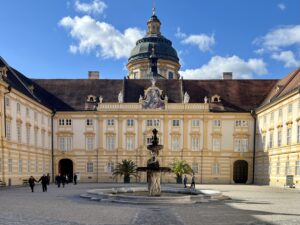
Tour of the monastery complex
At the checkout we also book the guided tour, which we can highly recommend. Although the same rooms are visited, this tour provides numerous additional and informative insights.
Imperial Staircase and Imperial Walkway
The entrance to the Imperial Wing is via the majestic Imperial Staircase, which is located at the south-western end of the Prelate's Courtyard. This magnificent staircase impresses with columns made of Kaiserstein and a richly decorated stucco decoration. The stucco ceiling is decorated with the image of the double-headed eagle.
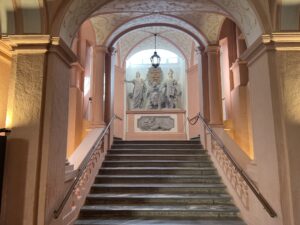
The Imperial Walk on the first floor extends over an impressive 196 meters and runs through almost the entire south wing of the building. Along the walls of the Imperial Corridor, depictions of Austrian rulers from the Houses of Babenberg and Habsburg can be admired.
We then move on to the Imperial Rooms, which now house the museum. Unfortunately, photography is not permitted inside the rooms. We would like to thank Melk Abbey for providing these photos.
Imperial Room – Museum
Each room is dedicated to a theme:
- Saint Benedict and the founding of the Benedictine Order
- The Babenbergs, Koloman and the founding of Melk Abbey
- Ups and downs in the history of the monastery and the church
- Romanesque and Gothic
- Baroque lifestyle
- Abbot Berthold Dietmayr and the monastery in the Baroque period
- Enlightened absolutism and Josephinism
- People and tasks in the monastery
- Breu Altar – Melk Altar from 1502
- Economy and construction history of the monastery
- The baroque building and its artistic decoration – model of the monastery complex
During the tour we hear exciting stories about the Kolomani monstrance and the Babenberg tomb.
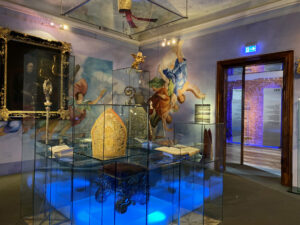
Marble Hall: Symbolism and Splendor
The next stop, the Marble Hall, impresses with inscriptions above the doors welcoming guests. The ceiling fresco by Paul Troger (1731) shows Pallas Athene on a lion chariot as a symbol of wisdom. Hercules symbolizes the strength needed to overcome challenges.
These figures represent Emperor Charles VI, who liked to be celebrated as Hercules. The inscriptions above the doors emphasize the importance of hospitality. The Marble Hall served as a dining and banqueting hall, with door frames made of Adnet and Untersberg marble and walls made of stucco marble. The ceiling painting is by Gaetano Fanti.
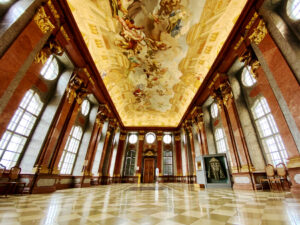
From the Marble Hall you go out onto the balcony
The viewing terrace in Melk Abbey – a panoramic view
The observation terrace, also known as the Altane, connects the Marble Hall and the library. It is an indispensable part of the iconic appearance of the baroque complex. From this terrace you can enjoy a breathtaking view of the Danube valley, the town of Melk and the magnificent west façade of the collegiate church.
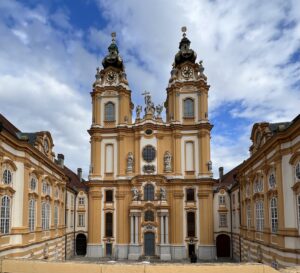
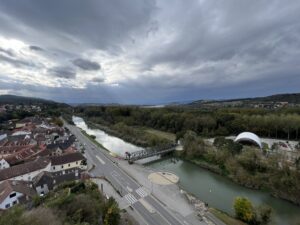
The Abbey Library – A highlight of the tour
The Abbey Library in Melk is undoubtedly one of the highlights of the museum tour. The area accessible to visitors consists of the main room and an adjoining room. These rooms once formed the main library of the monastery and were established in 1735. Later, in 1768, the "Upper Library", also known as the "Bergl Rooms", was added. These additional rooms can be reached via a spiral staircase from the adjoining room, but are not part of the museum tour. Together they form the magnificent Melk Baroque Library.
What museum visitors see is the impressive representative side of the library, which is consistent with the original Baroque library. The library is still an active research library that attracts researchers from all over the world and is often the subject of research projects. Special treasures of the library are always displayed in display cases in the main hall. Since 1996, ongoing research projects have also been presented here, as well as special exhibitions on current events and topics.
The Abbey Library currently houses more than 100,000 volumes, including around 1,800 manuscripts and 750 incunabula. Around 16,000 volumes are on display in the Great and Small Halls.
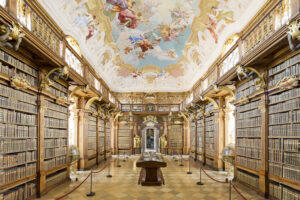
The actual tour ends after about an hour. Afterwards, however, you can still visit the beautiful collegiate church.
The Melk Abbey Church
The heart of the baroque monastery complex of Melk Abbey is undoubtedly the abbey church. Its main purpose was to emphasize the religious focus of the entire complex and to make clear the orientation towards God. The inscription “ABSIT GLORIARI NISI IN CRUCE” (Far be it from boasting except in the cross) above the entrance to the Benedictine Hall at the beginning of the tour of the abbey is a common thread linked to the church, in which the splendor of the cross is clearly evident.
Originally, the plan was to simply give the collegiate church a baroque makeover. However, from 1701 onwards, on the initiative of Abbot Berthold Dietmayr and according to plans by Jakob Prandtauer, a completely new church was built. The best masters of their guild were brought in to create the artistic design.
In the collegiate church one can also find the bones of Saint Coloman in the left side altar of the transept, while the right side altar is dedicated to Saint Benedict, although his sarcophagus is empty.
The importance of the Melk Abbey Church is illustrated by the inscription on the high altar: “NON CORONABITUR NISI LEGITIME CERTAVERIT” (Without a legitimate fight there is no victory). This fight, which leads to victory, is embodied on the high altar by the martyrdom of the princes of the apostles Peter and Paul. It is reflected in the death of faith of St. Coloman (Coloman altar) and in the monk's fight for virtue, represented by St. Benedict in the nave fresco. The victory in this spiritual fight is represented by the large crown of victory on the high altar, the frescoes on the dome and the victory wreath in the nave fresco.
The interior, designed by the architect Antonio Beduzzi, impresses with its abundance of gold leaf, stucco and marble. The predominant colors are gold, ochre, orange, green and gray.
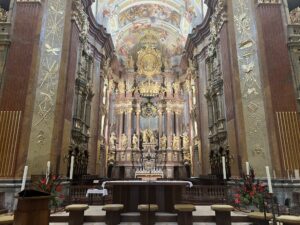
We leave the monastery again via the Torwartlhof. Now we want to see what the viewing platform on the North Bastion has to offer. You can get to it via the shop.
Viewing terrace
From the second floor (also accessible by elevator), the viewing terrace offers not only a wonderful view of the surrounding area, from the Alpine foothills to the Waldviertel, but also of the monastery grounds themselves. The garden pavilion and the monastery park are particularly good views. Unfortunately, the weather was rather poor during our visit. An open staircase provides direct access from the viewing point to the monastery park.
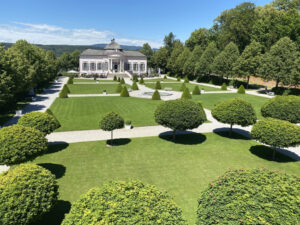
Stiftpark
Thanks to generous support, Melk Abbey Park has been revitalized and opened to the public. The gardens, which complement the majestic Melk Abbey, were inspired by Baroque and English landscape gardens and have retained their character to this day. Over time, new ideas and concepts have been integrated into the park, including the “cabinet clairvoyée”, the paradise garden, the “Walahfrid Strabo Garden”, the “jardin méditerranéen” and the “jardin oriental”.
The monastery park houses the baroque pavilion with exotic frescoes by Johann W. Bergl, the Jardin oriental with a view of the Danube valley, a meditative Benedictine path, a historic water basin and the Walahfrid Strabo Garden.
Melk Abbey is open all year round. The monastery can also be visited in winter. Here you can find the current opening hours.
Nearby is the Aggstein Castle Ruins and the Schallaburg, both of which are worth a visit!

